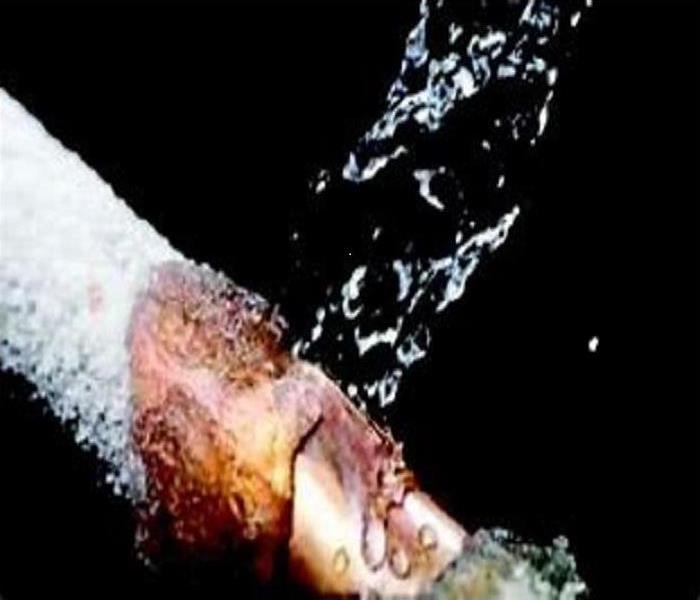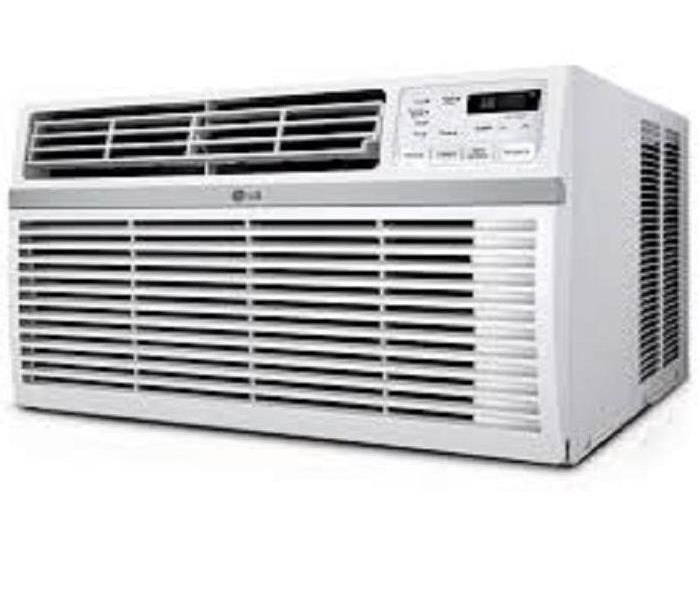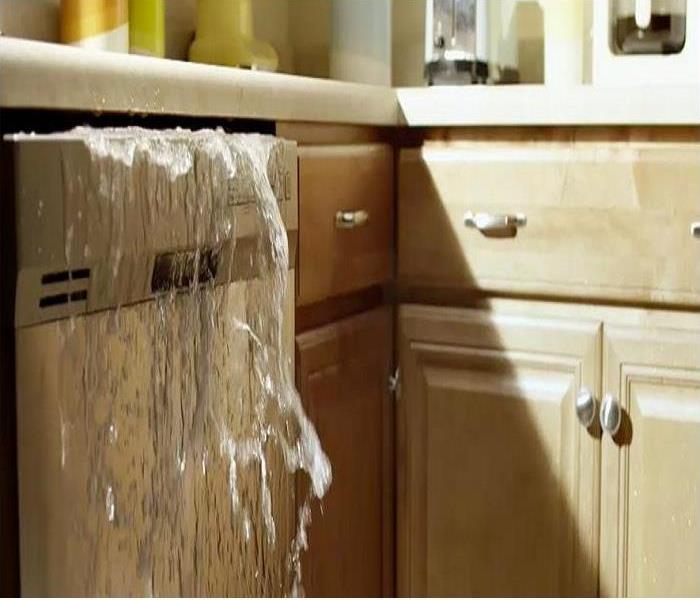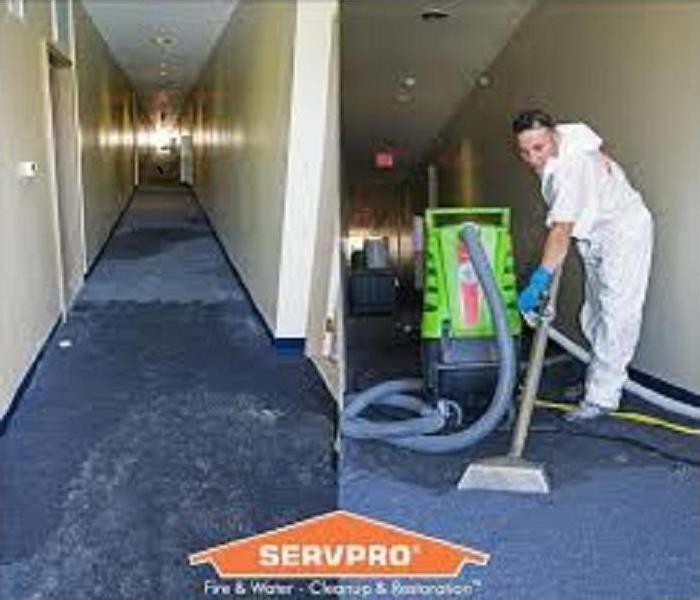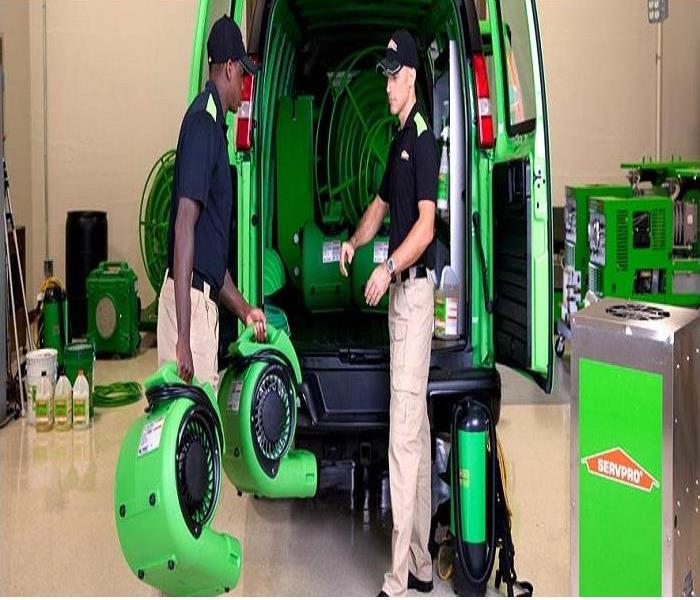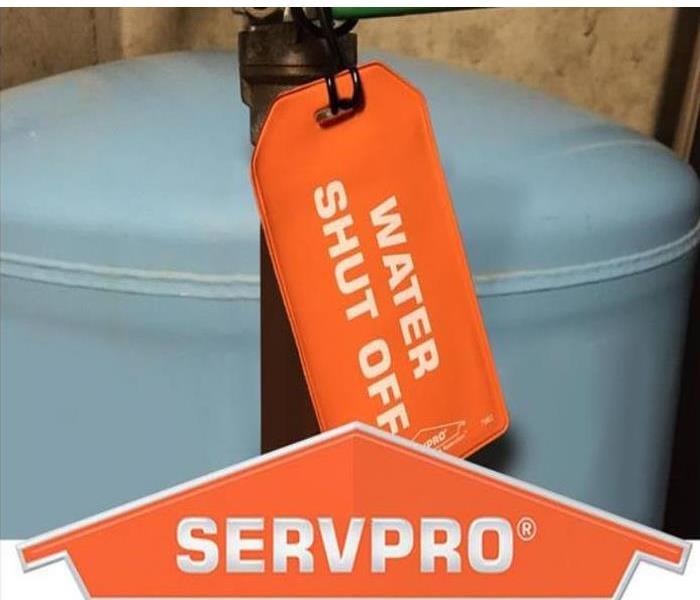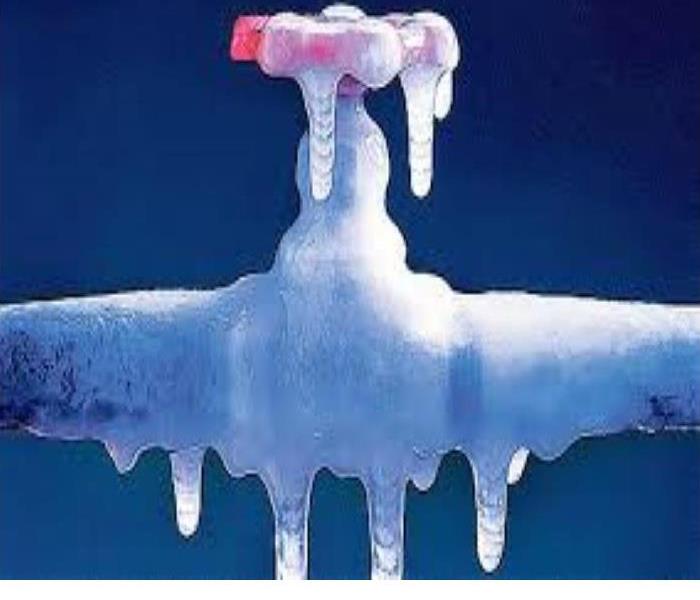Recent Water Damage Posts
How Our Water Damage Restoration Experts Protect Homes in Lynn
2/23/2025 (Permalink)
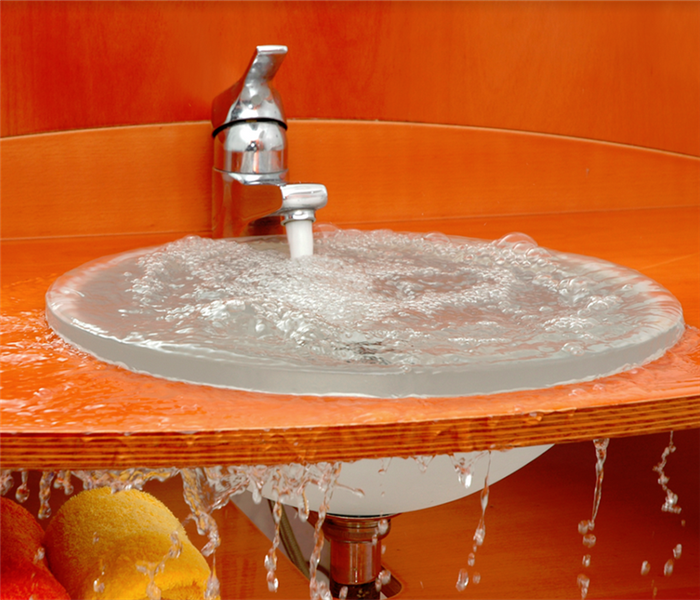 Water damage can cause a lot of trouble for you and your family. Contact SERVPRO 24/7 for remediation and mitigation services.
Water damage can cause a lot of trouble for you and your family. Contact SERVPRO 24/7 for remediation and mitigation services.
Tools & Methods Help Manage Water Damage Projects
There are several possible ways for water to enter a Lynn residence. The materials found where the water first enters the property can include the living space or the house's structure. Water damage restoration includes detecting where the water is entering the property.
SERVPRO® uses specialized equipment to help with every stage of water damage restoration in Lynn. It is impossible to eliminate the source of intrusive water without knowing its location. Water would continually flow in and negatively affect the home.
Infrared imaging devices show differences within a material. Moisture meters determine the amount of moisture; though moisture sensors can locate it, they cannot determine the quantity of water in a material. Here are three facets of acoustic leak detection that benefit homeowners:
- Functional in non-porous locations,
- Cost-effective, and
- Less intrusive testing.
Imaging and meters work well for absorbent materials. Acoustic testing works well for leaks along pipes behind a solid material - under a concrete slab. Basement floors, crawlspaces, and garages can also contain buried water pipes. Acoustic detection systems help us locate leaks by letting us hear evidence of leaking water. While water coming from a loosened joint or pinhole in an enclosed material does not reveal any moisture immediately, concrete, brick, and other such materials can eventually deteriorate.
When water steadily seeps out from a crack in your bathroom wall, this location might only be a weak spot, not the leak's location. Acoustic systems allow us to locate this more precisely, allowing for controlled demolition of the material obscuring the leak. Restoring a smaller area also minimizes restoration costs.
Infrared imaging shows little when the surface is consistently dry, and moisture meters can leave marks in softer materials (drywall, paneling). Acoustic-based testing avoids these problems.
Call SERVPRO of Lynn/Lynnfield at (781) 593-6663 for water damage restoration services wherever your home has developed a leak. We protect local residences with our detailed mitigation and restoration services.
Water and Mold Damage: The Silent Threat to Your Walls
11/25/2024 (Permalink)
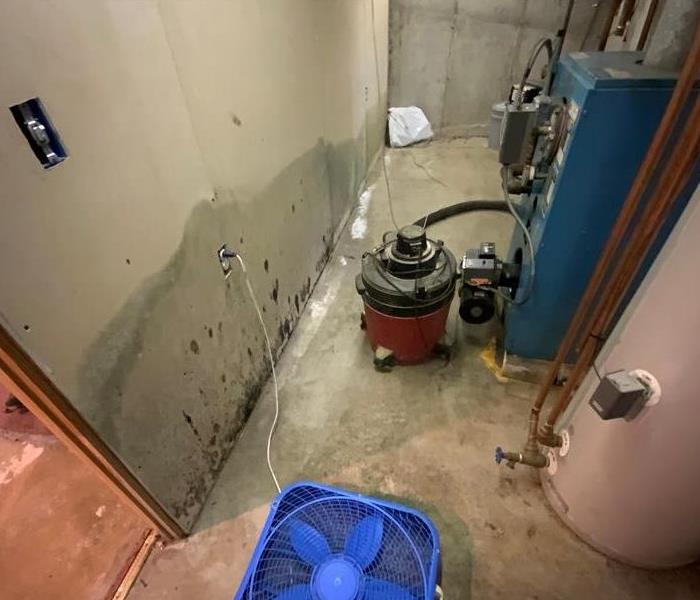 When you have water and mold in your basement the professionals at SERVPRO Team JRF are here to help!
When you have water and mold in your basement the professionals at SERVPRO Team JRF are here to help!
Water and mold damage can quickly turn a small problem into a major disaster, as shown in the image above. Whether from a leaking pipe, flooding, or unnoticed moisture buildup, water intrusion often leads to mold growth. SERVPRO® Team JRF specializes in handling water and mold remediation, ensuring your property is restored safely and efficiently. Let’s break down what you need to know.
The Hidden Dangers of Water Damage
When water seeps into your walls, it doesn’t just affect the surface. Behind the scenes, moisture creates the perfect environment for mold to grow. If left untreated, this can result in:
- Structural Damage: Prolonged water exposure weakens drywall, wood, and insulation, compromising the integrity of your walls.
- Odor and Appearance: Mold not only looks unsightly but also produces a musty odor that can permeate your space.
Signs You Need Water and Mold Remediation
Not all water damage is visible at first glance. Here are some signs you should look out for:
- Discoloration: Dark stains or streaks on walls often indicate water damage and potential mold growth.
- Warping or Bubbling: If your walls appear uneven or feel soft to the touch, moisture could be trapped inside.
- Musty Smell: A persistent, earthy odor in a specific area is a common sign of mold.
- Visible Mold Spots: Mold can appear as black, green, or even white patches, as seen in the image above.
How SERVPRO Team JRF Handles Water and Mold Remediation
- Thorough Inspection:
Our team uses advanced moisture detection equipment to identify the extent of water intrusion and mold growth, even in hidden areas. - Water Removal and Drying:
Using state-of-the-art pumps and industrial-grade dehumidifiers, we remove excess water and dry the affected space quickly to prevent further damage. - Mold Remediation:
We follow strict protocols to safely remove mold and treat affected surfaces to prevent regrowth. - Sanitization and Deodorization:
To ensure your space is safe, we clean and sanitize the area, eliminating odors and mold spores. - Restoration Services:
From drywall replacement to repainting, our team restores your property to its original condition, making it "Like it never even happened."
Preventing Future Water and Mold Damage
After the remediation process, we provide actionable tips to help you avoid future issues:
- Fix Leaks Immediately: Repair any plumbing issues or roof leaks as soon as possible.
- Improve Ventilation: Ensure proper air circulation in areas prone to humidity, like basements and bathrooms.
- Monitor Moisture Levels: Use a dehumidifier to maintain optimal indoor humidity (30-50%).
- Inspect Regularly: Check for signs of water intrusion or mold in hidden areas, such as behind furniture or inside closets.
Call SERVPRO Team JRF for Expert Help
Water and mold damage require immediate attention to minimize risks and costs. SERVPRO Team JRF is ready 24/7 to respond to your emergency with professional expertise and advanced tools.
Don’t wait until it’s too late. If you notice water damage or suspect mold growth in your property, contact SERVPRO Team JRF today at www.SERVPROsalem.com. Let us restore your peace of mind with our trusted remediation services!
What To Do When You Discover Floating Flooring in Your Basement
10/22/2024 (Permalink)
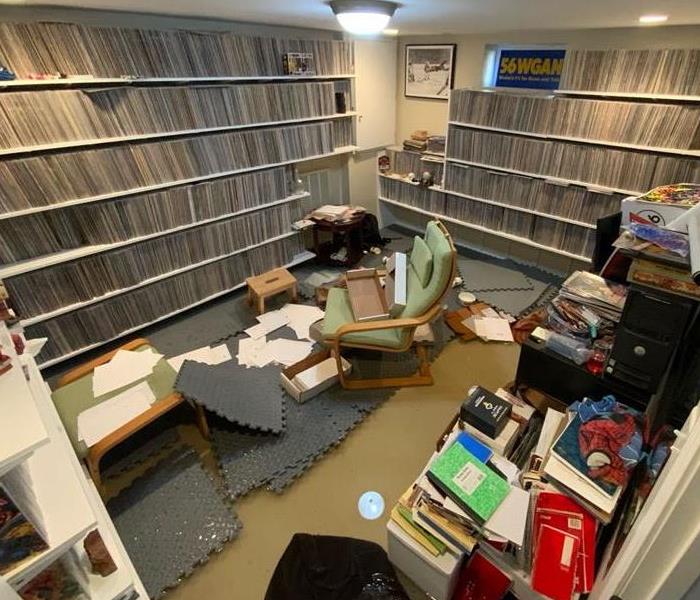 No need to jump ship - Call SERVPRO!
No need to jump ship - Call SERVPRO!
Hearing strange noises from your basement is enough to make anyone uneasy. But when you investigate and discover your child’s soft flooring pieces floating, it’s clear that water damage has occurred. A flooded basement is more than an inconvenience, it can lead to significant damage if not addressed quickly.
At SERVPRO®, we specialize in handling water damage emergencies and restoring homes to their pre-damaged condition. Here’s what you should know if you encounter floating flooring in your basement.
Why Is There Water in My Basement?
Water in your basement can come from several sources, including:
- Heavy Rainfall: Excessive rain can seep through foundation cracks or cause groundwater to rise, flooding your basement.
- Plumbing Leaks: A broken pipe or malfunctioning appliance can quickly release large amounts of water into your basement.
- Foundation Issues: Cracks in the foundation or poorly sealed windows can allow water to trickle in overtime, eventually leading to significant flooding.
- Sump Pump Failure: When your sump pump stops working or is overwhelmed, it can no longer remove excess water, leading to flooding.
If your child’s soft flooring pieces are floating, you likely have more than a few inches of water. Taking quick action is critical to minimize damage.
Steps to Take Immediately
- Ensure Safety First: Before you do anything, make sure it’s safe to enter the basement. Water and electricity are a dangerous combination. If you suspect any electrical components have come into contact with water, avoid the area and shut off the power to the basement if possible.
- Stop the Source of Water: If the water is coming from a burst pipe or a leaking appliance, shut off the water supply immediately. The quicker you stop the flow, the less damage you'll have to deal with.
- Remove Valuables: If it’s safe, remove any valuable or irreplaceable items from the flooded area. Water damage can ruin furniture, electronics, and personal belongings, so act fast.
- Call SERVPRO for Professional Help: The most important step is to contact a professional water damage restoration service like SERVPRO. With our 24/7 emergency response, we can quickly arrive to assess the situation, stop further damage, and start the restoration process.
How SERVPRO Handles Basement Flooding
At SERVPRO, we use advanced techniques and equipment to handle basement flooding quickly and efficiently. Here’s how we help:
- Water Extraction: Our team uses powerful pumps and vacuums to remove standing water from your basement, including the water causing your child’s soft flooring to float.
- Drying and Dehumidification: After the water is removed, we focus on drying out the area. Using industrial-grade air movers and dehumidifiers, we thoroughly dry the basement, reducing the risk of mold growth and structural damage.
- Cleaning and Sanitizing: Floodwater can introduce contaminants, especially if it came from a storm or sewage backup. We clean and sanitize all affected surfaces to ensure a safe and healthy environment.
- Restoration: Once the basement is dry and clean, we begin restoring it. This may include replacing damaged flooring, drywall, and insulation, ensuring your basement is returned to its pre-flood condition.
Preventing Future Flooding
Once your basement has been restored, you’ll want to take steps to prevent future flooding. Here are a few tips:
- Check your foundation for cracks and seal them to prevent water from seeping in.
- Maintain your sump pump to ensure it’s in working order.
- Install a basement waterproofing system to keep water out.
- Ensure gutters and downspouts are clear and direct water away from your home’s foundation.
Trust SERVPRO to Restore Your Basement
A flooded basement can be a stressful and overwhelming experience, but you don’t have to face it alone. SERVPRO is here to assist you through every step, from water extraction to full restoration. Our experienced technicians are equipped to handle any water emergency and restore your home quickly and efficiently.
Don’t wait to address water damage—call SERVPRO today and let us bring your home back to normal.
Uncovering Hidden Moisture: The Tools SERVPRO Uses to Ensure Your Property is Dry
8/20/2024 (Permalink)
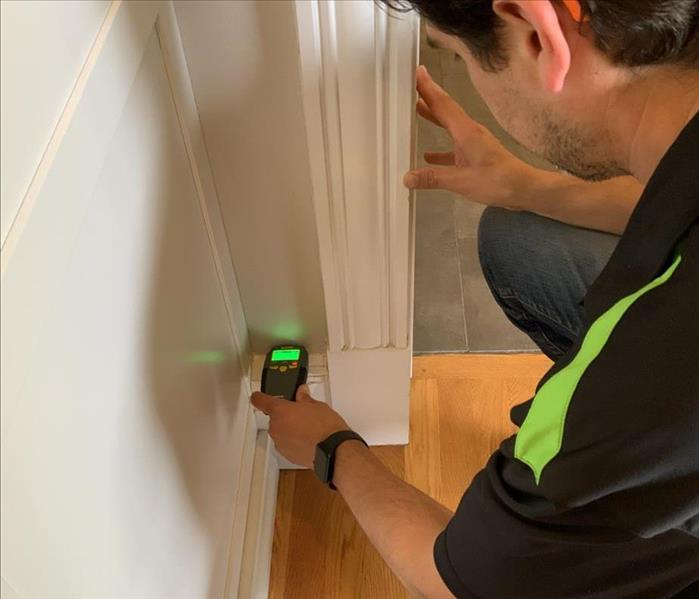 At SERVPRO, we understand that detecting moisture early is key to effective disaster recovery.
At SERVPRO, we understand that detecting moisture early is key to effective disaster recovery.
In the world of disaster recovery, moisture detection is crucial. Water damage, whether from leaks, floods, or spills, can lead to severe structural issues and mold growth if not addressed promptly and thoroughly. At SERVPRO®, we pride ourselves on using advanced tools and instruments to detect hidden moisture, ensuring a comprehensive restoration process. Let’s dive into the cutting-edge technology we use to find and address moisture problems before they escalate.
1. Moisture Meters: Precision at Your Fingertips
Moisture meters are our go-to tools for initial assessments. These handheld devices measure the moisture content in various materials, from wood to drywall. We use both pin-type and pinless meters:
Pin-Type Moisture Meters: These meters have metal probes that penetrate the material to gauge moisture levels. They’re particularly effective for measuring moisture in wood and drywall, providing accurate readings of how wet the material is.
Pinless Moisture Meters: These use electromagnetic sensors to scan the surface of materials without leaving any marks. They’re ideal for checking larger areas and detecting moisture within walls and floors without causing damage.
2. Infrared Cameras: Seeing Beyond the Surface
Infrared cameras, or thermal imaging cameras, are invaluable for detecting moisture that isn’t visible to the naked eye. These cameras capture thermal images, highlighting temperature differences in building materials. Moisture often causes materials to cool down, and these temperature variations appear as anomalies on the thermal images. By analyzing these images, our technicians can identify areas with hidden moisture, which helps us target our restoration efforts precisely.
3. Hygrometers: Monitoring Humidity Levels
Hygrometers measure the relative humidity in the air, which is crucial for assessing the extent of water damage and guiding the drying process. High humidity levels can indicate hidden moisture or ongoing evaporation from damaged materials. By monitoring these levels, we can ensure that we’re effectively controlling the indoor climate to prevent mold growth and further damage.
4. Thermal Imaging: Assessing Surface Temperature
Thermal imaging complements infrared cameras by providing detailed surface temperature readings. This technology helps us to detect cooler spots that might indicate trapped moisture beneath the surface. By identifying these temperature anomalies, we can focus our drying efforts where they’re needed most, enhancing the efficiency of the restoration process.
5. Air Movers and Dehumidifiers: Essential Drying Tools
While not detection tools per se, air movers and dehumidifiers play a crucial role in the moisture control process. Air movers accelerate the evaporation of moisture from wet surfaces, while dehumidifiers extract the moisture from the air, reducing humidity levels and preventing secondary damage. These tools are used in conjunction with our detection equipment to ensure that all traces of moisture are addressed.
6. Leak Detection Equipment: Finding the Source
Leak detection equipment helps us locate the source of water intrusion. Acoustic leak detection uses sound waves to identify leaks within walls and pipes, while infrared technology can also be used to pinpoint leaks by detecting temperature changes. Finding and repairing the source of the leak is essential to preventing future water damage and ensuring a successful restoration.
Conclusion
At SERVPRO, we understand that detecting moisture early is key to effective disaster recovery. Our advanced tools and instruments allow us to assess, locate, and address moisture issues with precision and efficiency. Whether it’s through moisture meters, infrared cameras, or sophisticated leak detection equipment, we’re committed to restoring your property to its pre-damage condition and ensuring it’s safe and dry. Trust SERVPRO to bring our expertise and cutting-edge technology to every restoration project, safeguarding your home or business from the unseen damage of moisture.
Stay Cool and Keep Calm: Why SERVPRO is Your Summer Savior!
7/15/2024 (Permalink)
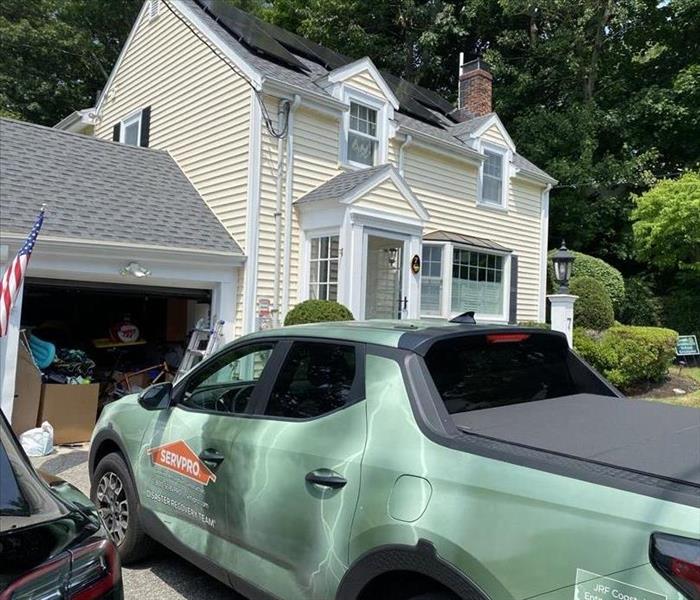 Stay cool, stay safe, and remember: when life gives you lemons (or leaks), SERVPRO will turn them into lemonade!
Stay cool, stay safe, and remember: when life gives you lemons (or leaks), SERVPRO will turn them into lemonade!
Ah, summer – the season of sun-kissed days, backyard barbecues, and... unexpected home disasters? That's right, while you're busy sipping lemonade and soaking up the rays, your home might be quietly brewing its own kind of trouble. But fear not, homeowners! SERVPRO® is here to save the day, keeping your summer vibes chill and your home in tip-top shape.
Beat the Heat (and the Leaks)
As temperatures rise, so do the chances of encountering water damage woes. From burst pipes to sneaky leaks in the attic, summertime can be surprisingly wet. But fret not! SERVPRO's expert team is ready to swoop in faster than you can say "ice cream truck." With state-of-the-art equipment and lightning-fast response times, we'll have those leaks licked before they even have a chance to ruin your sunny disposition.
Stormy Weather? No Problem!
Summer storms might be great for dancing in the rain, but they're not so great for your home's structural integrity. Whether it's a rogue thunderstorm or a tropical downpour, SERVPRO knows how to handle the aftermath. We're like the superheroes of water extraction and damage restoration, armed with the latest gadgets and a knack for turning soggy situations into success stories.
Fireworks Mishap? We've Seen It All
What's summer without a few fireworks? But sometimes those backyard pyrotechnics can lead to more excitement than you bargained for. If your Fourth of July festivities get a little too fiery, don't panic – just call SERVPRO. We specialize in fire damage restoration and odor removal, ensuring that your summer soirée doesn't end with a fizzle.
Mold: The Uninvited Summer Guest
Humidity, meet mold – the unwelcome guest that loves crashing summer parties. But fear not, because SERVPRO is the ultimate mold-busting guru. With our expertise in mold remediation and prevention, we'll banish those spores faster than you can say "sunscreen." Because nobody wants mold as a souvenir from their summer vacation.
Keep Calm and Call SERVPRO
So, whether you're lounging by the pool or chasing fireflies at dusk, rest easy knowing that SERVPRO has your back. Our team of friendly professionals is ready and waiting to tackle any home disaster that summer throws your way. With us on your side, you can focus on making memories and soaking up the sunshine – because that's what summer's all about.
Stay cool, stay safe, and remember: when life gives you lemons (or leaks), SERVPRO will turn them into lemonade (or at least dry floors and restored peace of mind). Here's to a summer filled with fun, laughter, and the assurance that SERVPRO is just a phone call away. Cheers to sunny days and stress-free living!
Understanding the Hidden Threat: Drywall as a Breeding Ground for Mold After Water Loss Events
6/11/2024 (Permalink)
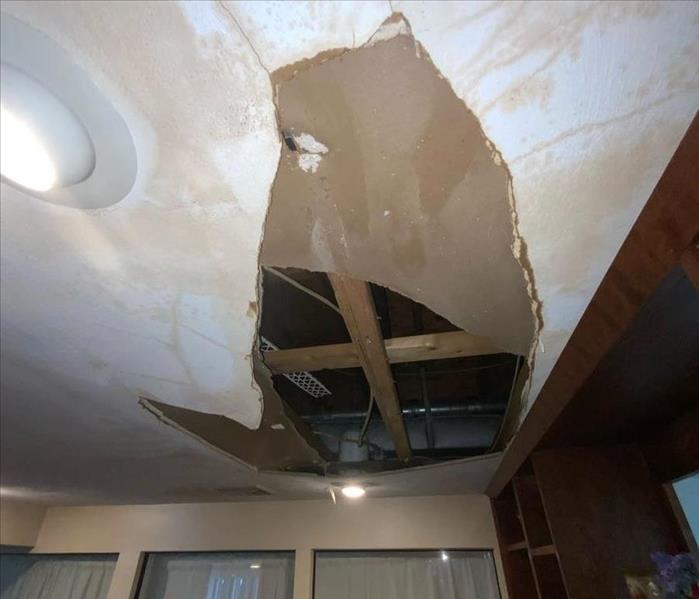 While drywall may seem innocuous, its susceptibility to mold growth underscores the hidden threat posed by water intrusion.
While drywall may seem innocuous, its susceptibility to mold growth underscores the hidden threat posed by water intrusion.
When water infiltrates our homes, the visible damage often steals the spotlight. However, lurking behind the scenes, a silent menace may be taking hold: mold. Among the various surfaces within our homes, drywall stands out as a particularly susceptible breeding ground for mold after water loss events. Understanding this threat is crucial for effective mitigation and safeguarding the health of our living spaces.
The Perfect Habitat
Drywall, commonly used in construction for its affordability and versatility, is composed of porous materials that readily absorb moisture. This inherent porous nature makes drywall an ideal habitat for mold growth, especially in the aftermath of water intrusion. When water saturates drywall, it seeps into its porous structure, creating a damp environment conducive to mold proliferation.
Rapid Colonization
Mold spores, present in the air and ubiquitous in our surroundings, require moisture to germinate and thrive. Once water saturates drywall, these dormant spores spring into action, quickly colonizing the moist environment. Within as little as 24 to 48 hours, mold can begin to spread across the surface of damp drywall, forming visible patches and releasing airborne spores into the surrounding area.
Health Hazards
Beyond the structural damage it inflicts, mold poses significant health risks to occupants of affected spaces. Mold spores, when inhaled or come into contact with skin, can trigger allergic reactions, respiratory issues, and exacerbate existing health conditions. Certain mold species, such as Stachybotrys chartarum (commonly known as black mold), produce mycotoxins that can pose severe health risks, particularly to vulnerable individuals.
Mitigation Strategies
Addressing mold growth in drywall requires a multifaceted approach aimed at both moisture control and remediation. Swift action is paramount to prevent further proliferation and mitigate potential health hazards. Here are some key strategies:
Prompt Water Extraction: Immediately address any water intrusion or leaks to minimize moisture saturation in drywall.
Thorough Drying: Utilize professional-grade drying equipment to thoroughly dry affected drywall and prevent lingering moisture.
Mold Remediation: Engage certified professionals to conduct comprehensive mold remediation, including removal of affected drywall, thorough cleaning of surfaces, and application of mold inhibitors.
Moisture Prevention: Implement measures to control indoor humidity levels and prevent future water intrusion through proper ventilation, insulation, and maintenance of plumbing fixtures.
Vigilance and Education
In the battle against mold, vigilance and education are our most potent weapons. Homeowners and property managers must remain vigilant for signs of water damage and mold growth, especially in areas prone to moisture accumulation, such as basements, bathrooms, and kitchens. Furthermore, educating oneself about the risks of mold and the importance of proactive mitigation can empower individuals to safeguard their homes and prioritize their well-being.
In conclusion, while drywall may seem innocuous, its susceptibility to mold growth underscores the hidden threat posed by water intrusion. By understanding the dynamics of mold proliferation in drywall and adopting proactive mitigation strategies, we can protect our homes, preserve our health, and ensure a safe and healthy living environment for generations to come.
Dealing with Wet Carpet After a Water Loss: A Comprehensive Guide
5/28/2024 (Permalink)
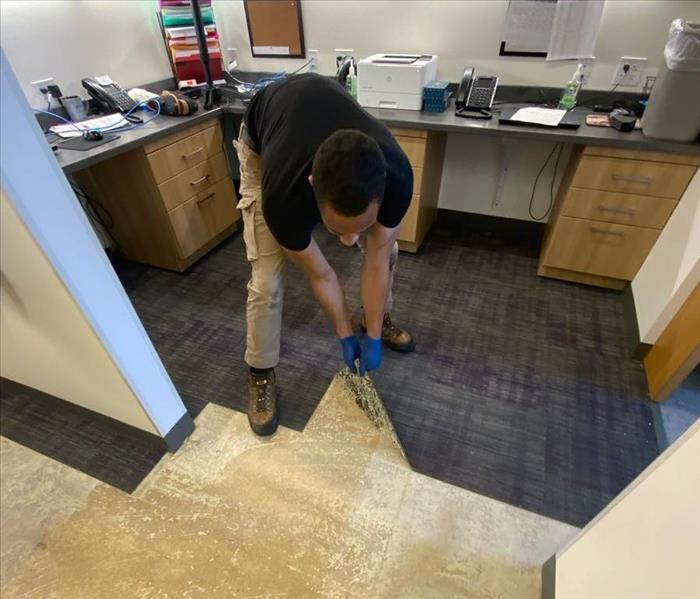 Dealing with wet carpet following a water loss requires prompt action and thorough attention to detail.
Dealing with wet carpet following a water loss requires prompt action and thorough attention to detail.
Experiencing water damage in your home can be a stressful situation, especially when it affects your carpeting. Wet carpet not only poses a risk to your home's structural integrity but also creates the perfect environment for mold and mildew growth if not addressed promptly. In this guide, we'll walk you through the steps to effectively manage wet carpet following a water loss.
1. Assess the Situation: Before taking any action, assess the extent of the water damage and identify the source of the water intrusion. If the water is from a clean source, such as a burst pipe, it's generally safer to handle. However, if the water is contaminated, such as from a sewage backup, avoid contact and seek professional help immediately.
2. Ensure Safety: Safety should be your top priority. Turn off electricity to the affected area to prevent the risk of electrical shock. If standing water is present and the area is flooded, avoid walking through it until you've turned off the power supply.
3. Remove Excess Water: Use towels, mops, or a wet/dry vacuum to remove as much water as possible from the carpet and surrounding area. Work from the outer edges toward the center to prevent spreading the water further.
4. Elevate Furniture: Lift furniture legs and place aluminum foil or wooden blocks underneath to prevent them from absorbing moisture and causing further damage to the carpet. This also facilitates airflow and drying.
5. Increase Ventilation: Open windows and doors to improve airflow and promote natural drying. Utilize fans and dehumidifiers to expedite the drying process. Position fans to blow air across the carpet's surface, focusing on the wettest areas.
6. Sanitize and Disinfect: If the water damage involves contaminated water, it's crucial to sanitize and disinfect the affected area to prevent the growth of bacteria and mold. Use a mixture of water and a mild detergent to clean the carpet, and consider professional cleaning and sanitization services for thorough treatment.
7. Monitor and Assess: Regularly monitor the drying progress of the carpet and surrounding areas. If the carpet remains damp after 24-48 hours or if you notice signs of mold growth, contact a professional water damage restoration company for assistance.
8. Seek Professional Help: For extensive water damage or if you're unsure how to proceed, don't hesitate to seek professional help from a certified water damage restoration company like SERVPRO®. Trained technicians have the expertise, equipment, and resources to properly assess the damage and implement effective restoration solutions.
Dealing with wet carpet following a water loss requires prompt action and thorough attention to detail. By following these steps and seeking professional assistance when needed, you can minimize damage, prevent mold growth, and restore your home to its preloss condition. Remember, when in doubt, don't hesitate to reach out to SERVPRO for expert guidance and assistance.
How does SERVPRO save money for commercial clients?
4/24/2023 (Permalink)
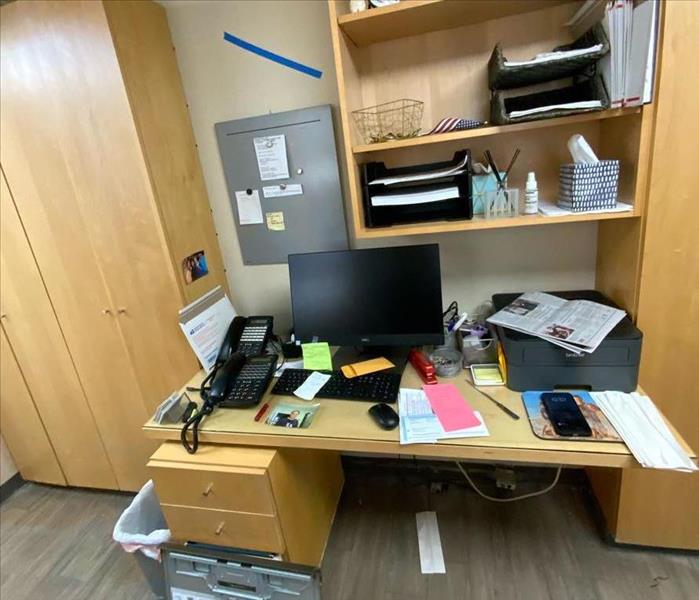 SERVPRO is a trusted resource and can save your business thousands in the event of an emergency.
SERVPRO is a trusted resource and can save your business thousands in the event of an emergency.
SERVPRO is a professional cleaning and restoration company that can save money for commercial property owners in several ways:
Rapid Response: SERVPRO has a 24/7 emergency response team that can quickly assess the damage and begin the restoration process. The faster they can respond to a disaster, the less damage that will be done, and the lower the overall cost of restoration.
Mitigation: SERVPRO uses mitigation techniques to stop further damage from occurring. By addressing the damage quickly, they can prevent further damage and avoid more costly repairs.
Professional Equipment: SERVPRO has access to professional equipment that can help clean up the affected area quickly and efficiently. They use state-of-the-art equipment such as air movers, dehumidifiers, and specialized cleaning agents to restore the property to pre-disaster conditions.
Insurance Coordination: SERVPRO works with insurance companies to help property owners save money on restoration costs. They can help navigate the insurance claim process and provide documentation to support the claim.
Preventative Maintenance: SERVPRO also offers preventative maintenance services to commercial property owners. This can help prevent future disasters from occurring and save property owners money in the long run.
In summary, SERVPRO can save commercial property owners money by responding quickly to emergencies, using mitigation techniques, utilizing professional equipment, coordinating with insurance companies, and offering preventative maintenance services.
Providing Efficient Restoration for Lynn Water Damage
8/5/2022 (Permalink)
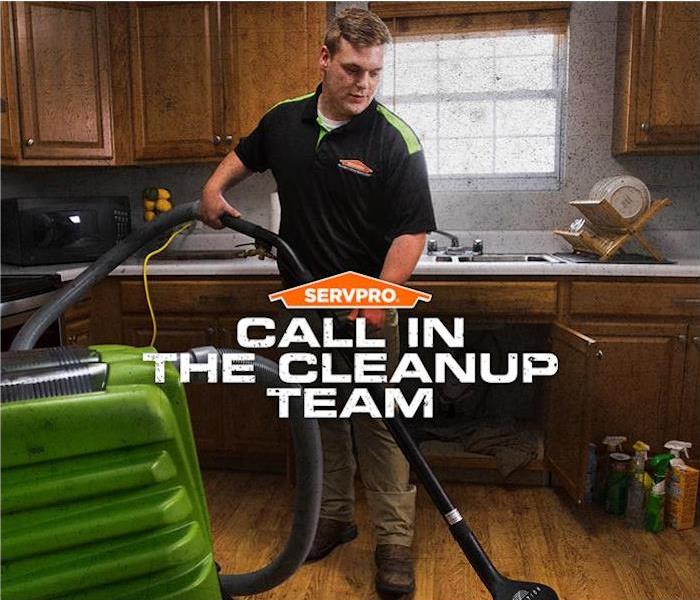 SERVPRO techs have the equipment for rapid water damage mitigation in Lynn.
SERVPRO techs have the equipment for rapid water damage mitigation in Lynn.
Several Steps for Water Damage Recovery in Lynn
Cleaning up after water disasters is often more complex than homeowners realize. Despite the desire to perform DIY restoration, property owners do not have the sophisticated tools and the restoration experience to manage the full scope of the work necessary.
Rapid responses are critical because Lynn water damage scenarios can quickly spread and impact new portions of households and businesses. As the largest unit of our restoration team, we have WRT-Certified technicians ready to mobilize with our Green Fleet of vehicles shortly after the first notice of loss (FNOL). Mitigative priorities include:
- Water Removal Services – Standing surface water must be removed promptly to prevent further saturation and absorption into sensitive building materials.
- Controlled Demolition – Sagging drywall and bulk materials must be removed.
- Content Management – SERVPRO professionals can relocate contents to a safe place on-site or our warehouse for drying and cleaning.
Extraction for Water Damage
Because water removal services are vital to the mitigation process, customers need to recognize the tools involved. Our team utilizes a combination of pumps and vacuums to extract and discharge standing water from the residence.
The Tools of Effective Drying
Drying is the essential element of every water restoration project. Water damage must be resolved on surfaces and trapped in building materials, and our drying equipment provides the most efficient path to achieve this. Some of our most heavily used machines and instruments include:
- Air Movers – High-velocity blowers that push warm, dry air against damp surfaces.
- Drying Mats – Using drying mats pulls moisture to the outermost surface layer of wood plank flooring using capillary suction.
- Heaters – Increasing the temperature allows drying and cleaning strategies to happen faster.
- Dehumidifiers – to pull moisture out of the environment after evaporation.
Surface Cleaning Strategies
After drying up most of the damage, residues and soils are still a threat to the exposed materials. This residual damage is especially true after conditions like flooding. Some of the most heavily soiled and damaged elements in the house are carpeted floors. We use bonnet cleaning and potent cleaning products along with it to restore the colorfastness of these fibrous floors and prevent permanent staining or discoloration.
Mold Prevention Approaches
Where there is water, there is a possibility for mold growth. Damp surfaces and conditions in areas of the house that persist for more than a couple of days have likely been exposed to residential mold spores. With naturally occurring microorganisms in every environment, mold colonization is only waiting for the appropriate conditions to facilitate a colony. We treat surfaces in the area with inhibiting products and work to keep the work areas below the humidity thresholds (about 55-60%) to support mold organisms.
Are Water Damage Repairs Needed?
While many do not always consider the structural damage that water disasters can cause, this is one of the focal points of the full-service solutions our SERVPRO team provides. We understand that there are likely vulnerabilities that exist after prolonged moisture damage, including the needed repairs to elements like the plumbing system, if still a problem. We carefully determine the extent of build-back services necessary after restoration and begin implementing these actions as soon as possible to save customers time and money.
Lynn water damage incidents make up the bulk of our service calls, so it is a situation that we must always be prepared to face. We prioritize keeping drying equipment and extractors stocked on our Green Fleet vehicles for a fast mobilization when disasters strike. Give our SERVPRO of Lynn / Lynnfield team a call when you need us at (781) 593-6663.
Water Mitigation Minimizes Damage in Lynn - Call SERVPRO
6/2/2022 (Permalink)
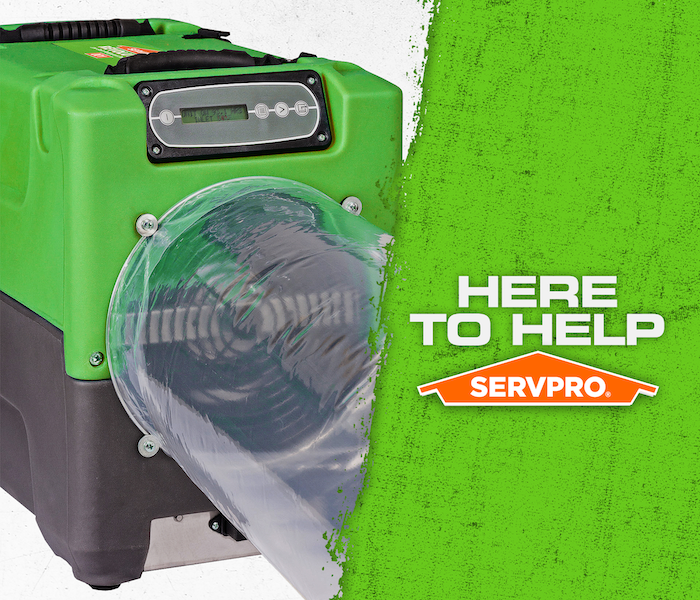 Water mitigation services in Lynn is a job for SERVPRO. Our IICRC certified technicians have all the experience needed for your home.
Water mitigation services in Lynn is a job for SERVPRO. Our IICRC certified technicians have all the experience needed for your home.
SERVPRO Applies Water Mitigation Techniques to Reduce Water Damage in Lynn
Water leaks in Lynn can cause lots of damage to the immediate area of the leak. Failure to stop the leak and remove the water as quickly as possible can cause permanent damage to many materials as they absorb water and moisture, swell and lose their structural integrity. Hardwood flooring, drywall, and cupboards made from particleboard are examples of materials that absorb moisture.
SERVPRO provides water mitigation services in Lynn and the surrounding areas. In less than four hours from your call, we believe in a fast response to manage the water damage and mitigate further damage to various building materials. We also know our clients are concerned about their homes and want someone onsite as quickly as possible to deal with the water damage.
Removing water from flooring materials and lowering the humidity level reduces the chance of secondary damage. For example, water seeps between the hardwood floor planks and, if not removed, causes the hardwood planks to warp and buckle as they absorb moisture. SERVPRO utilizes floor mats to withdraw water from the floor. We also deploy high-capacity air movers and dehumidifiers to reduce humidity levels in the home. Clients are also encouraged to activate their AC systems to reduce humidity levels.
Water mitigation is a primary service we offer to our clients to reduce the secondary damage to fabrics and porous materials. Our building services team can also assist with any water damage repairs required. Don’t hesitate to call us for assistance removing water and reducing humidity levels after a water leak. Services offered by SERVPRO include:
Call the water mitigation specialists from SERVPRO of Lynn / Lynnfield and nearby areas for assistance. We can help 24/7. Call (781) 593-6663.
Need Water Restoration in East Lynn – Call SERVPRO
6/2/2022 (Permalink)
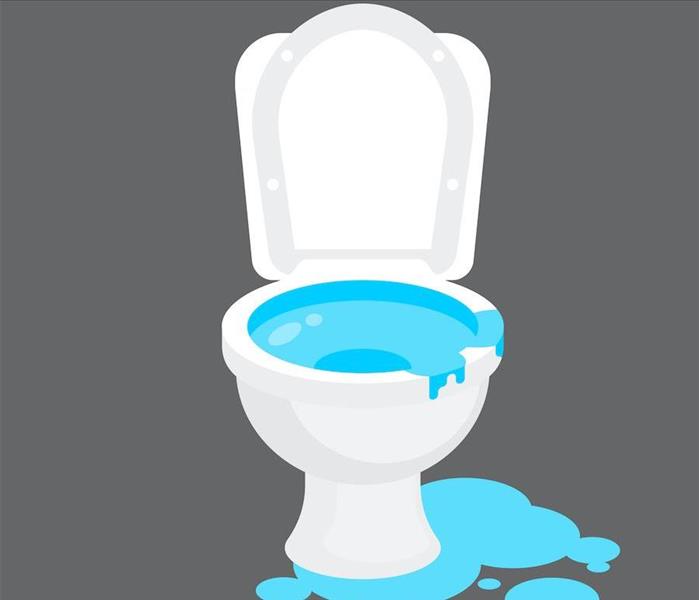 East Lynn homes with water damage restoration need the help of SERVPRO. We are ready 24/7 365 days a year.
East Lynn homes with water damage restoration need the help of SERVPRO. We are ready 24/7 365 days a year.
SERVPRO Provides Water Restoration and Repairs in East Lynn
Water leaks in East Lynn often cause a great deal of damage to walls and flooring. A leak from a pipe inside a wall may go unnoticed before water is observed. Perhaps the carpet in the leak area is wet, or the drywall feels soft and spongy to the touch. Undetected water leaks can cause a great deal of damage if allowed to continue before taking action to find and repair the leaking pipe.
SERVPRO provides water restoration in East Lynn associated with plumbing leaks, sink or tub overflows, leaks from AC units, and many more situations involving water leaking into your home. We can help locate the source of the leak, and our building services team can assist with repairs to the plumbing system and the removal of wet drywall, flooring, or cupboards that the water has damaged.
Once the leak is corrected, we use weighted water extractors to remove water from carpets and under padding. Hardwood floor drying mats are used on hardwood floors to remove water from between the hardwood planks to prevent absorption, swelling, and buckling. Water detectors help us find pockets of water that may exist inside walls or under cupboards. We use suction wands to access the space and remove the water.
Our air movers blow dry air over the space to absorb moisture, and our high-capacity dehumidifiers reduce the humidity in your home to normal levels drying your flooring materials. Building services can assist with new carpeting or drywall repairs if needed. SERVPRO provides the following services to our clients in East Lynn:
- Water clean up
- Water damage remediation
- Water damage repairs
Call the water restoration specialists from SERVPRO of Lynn / Lynnfield and nearby areas for assistance. We can help 24/7. Call (781) 593-6663.
Lynn Home Water Leaks – Call for Water Damage Repair
3/11/2022 (Permalink)
 SERVPRO water damage repair services are top-notch. We use the latest technology and equipment for every disaster. Call now!
SERVPRO water damage repair services are top-notch. We use the latest technology and equipment for every disaster. Call now!
SERVPRO Technicians in Lynn Handle Water Damage Repair Work
Water damage occurs due to different causes. Your Lynn property may have old plumbing elements, an appliance could spring a leak, or there may be a break in your supply line. No matter what, you need someone there to handle water removal services. SERVPRO looks at the root cause of the issue, extracting water and repairing the problem so that you are not dealing with more headaches in the future.
If you do not handle water damage repair in Lynn as it happens, you could be in for immense secondary damage. Keep in mind:
- Moisture may develop within walls, carpeting, carpet pads, subfloor, furnishings, and more.
- Black mold can develop in as little as 24 to 72 hours after moisture exposure.
- Given the right conditions (temperature, humidity, etc.), mold can colonize in two weeks or less.
Is Hidden Moisture a Problem?
There are some disasters in the home that cause visible water damage. However, you may be amazed at how often hidden moisture creates costly damage. The best thing to do is remain proactive and inspect various areas for moisture development, such as:
- Damaged gaskets on appliances such as dishwashers, washing machines, refrigerators, and freezers.
- Condensate lines from your HVAC system that may cause damage to ceilings or walls.
- Water heater damage, including tank issues, plumbing damage, or valve problems.
- Loosened hookups or pinholes on supply lines connecting to any water-based appliances throughout the home.
No matter the source of the damage, SERVPRO is there with repair solutions and restoration efforts to make everything good as new again. Using controlled demolition with trusted contractors, we make your property “Like it never even happened.”
Why trust your restorations to anyone but the best? SERVPRO of Lynn/Lynnfield is available 24/7 by dialing (781) 593-6663 – or requesting water damage repair help online!
Can Lynn Water Restoration for Kitchen Sink Leaks Save Cabinets?
2/18/2022 (Permalink)
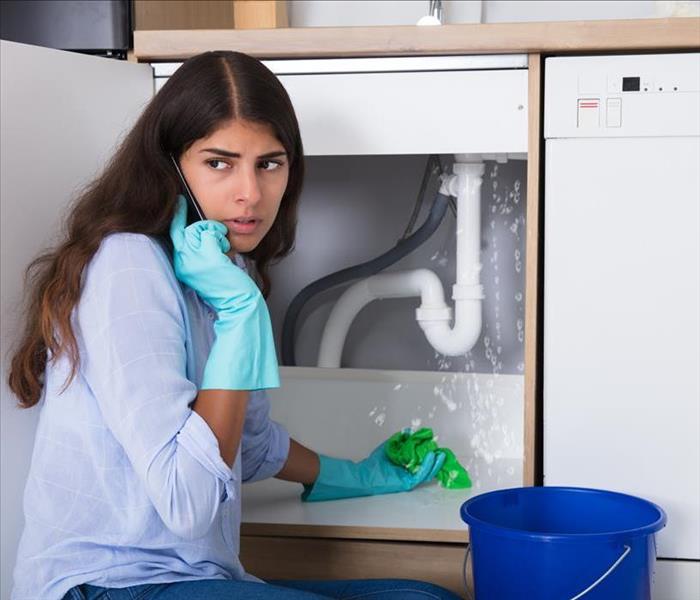 SERVPRO can salvage most water damaged kitchen base cabinets in Lynn, "Like it never even happened."
SERVPRO can salvage most water damaged kitchen base cabinets in Lynn, "Like it never even happened."
SERVPRO Water Restoration Techs Take Care to Restore Water-Damaged Cabinetry in Lynn
Kitchen water restoration needs for Lynn homeowners can vary based on the scale of the disaster that caused the moisture exposure. Fast action is needed to minimize potential damages and microbial growth, regardless of whether a small leak saturates the bottom panel of an under-sink cabinet, or a burst pipe pours copious amounts of water all over the underlayment, other assemblies, and the flooring.
SERVPRO water restoration services save Lynn home fixtures after any size disaster with the help of cutting-edge technologies and EPA-registered fungicides. This crew can return the property to a pre-disaster condition while preserving as much of the original structure and contents as is feasible.
Drying Under-Sink Cabinets After Water Damage Occurs
SERVPRO technicians have several strategies available for cabinet cleanup and drying depending on the construction and placement of under-sink cabinets and the amount of damage present.
- Cabinets without backs can prove much easier to dry, especially when located on interior walls, where techs can make small holes on the opposite side of the wall to dry them from the back
- Drying underneath a wet cabinet typically entails removing any base molding present so technicians can easily access the toe-kick. SERVPRO technicians can then drill small holes into the bottom of the cabinet for maximum ventilation underneath
- SERVPRO professionals can use back-mounted extraction units for thorough water removal from nooks and crannies and treat affected areas with EPA-approved biocides
- When the cabinet is ready for drying, techs can combine containment measures like polyethylene sheeting with vent systems to force air into hard-to-reach cavities for accelerated drying
Homeowners seeking “Like it never even happened” quality service for their fixtures can contact the SERVPRO of Lynn / Lynnfield crew at (781) 593-6663.
Knowing How to Prevent Water Damage in Your Lynn Home Cuts Stress and the Potential Costs of Restoration
12/13/2021 (Permalink)
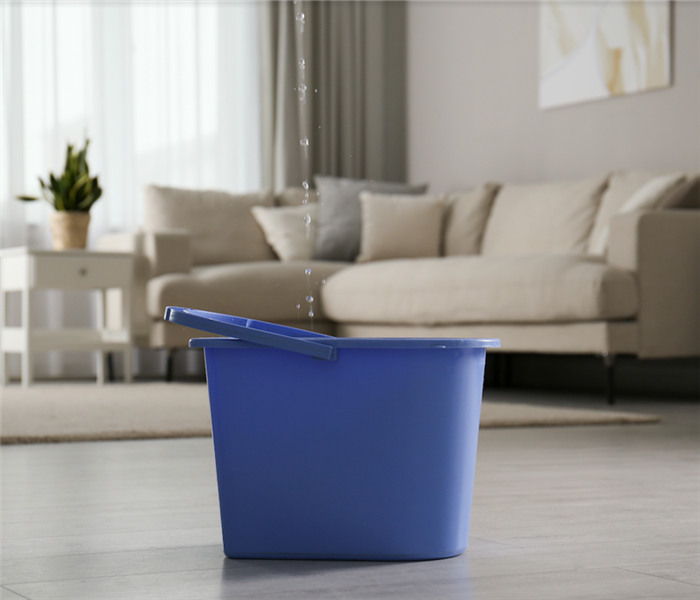 Whether you are facing current water damage or trying to prevent a future scenario, SERVPRO can help! Contact our certified team 24/7.
Whether you are facing current water damage or trying to prevent a future scenario, SERVPRO can help! Contact our certified team 24/7.
SERVPRO is Ready to Help with Water Removal Services and Restoration to Handle Damage to Your Lynn Property
Water damage is something that can be difficult to prepare for, and emergencies happen without warning. However, there are some smart steps you can take to prevent issues from causing damage to your Lynn home. SERVPRO wants customers in the area to know that you can protect your home and its contents from water damage just like you would fire. If you have a water-related emergency, We’re Faster to Any Size Disaster to help you get back on track!
Water infiltration and damage in Lynn can sometimes go unnoticed until the damage caused is already quite significant. We want our customers to have tips and prevention tools to help keep them from dealing with pricey repair work. You can protect your interior and belongings from water damage by:
- Performing visual inspections of your plumbing network and fixtures
- Having a plumbing professional come in for regular maintenance and upkeep
- Protecting and repairing your home exterior from outside rain and storm damage
- Winterizing your outdoor hose bib and exterior shutoff valves to keep pipes from freezing when temperatures drop
Should a hidden leak or emergency event cause water damage, SERVPRO is available 24/7 for rapid response. We can come out to your property, begin a detailed assessment, and use our state-of-the-art moisture detection tools to get to the heart of the issue. Our IICRC-certified team will implement a plan for water removal services, drying, and restoration to ensure everything gets back to pre-water damage condition. If necessary, we perform controlled demolition to remove and replace any unsalvageable building materials. Potential mold and mildew growth also get addressed, including sanitizing all surfaces for safety and peace of mind.
Do you need help with water restoration? SERVPRO of Lynn/Lynnfield is the team to call! You may reach us any time by dialing (781) 593-6663 or requesting help online.
What Is Necessary for Safe Water Damage Restoration in Lynnfield Properties?
11/12/2021 (Permalink)
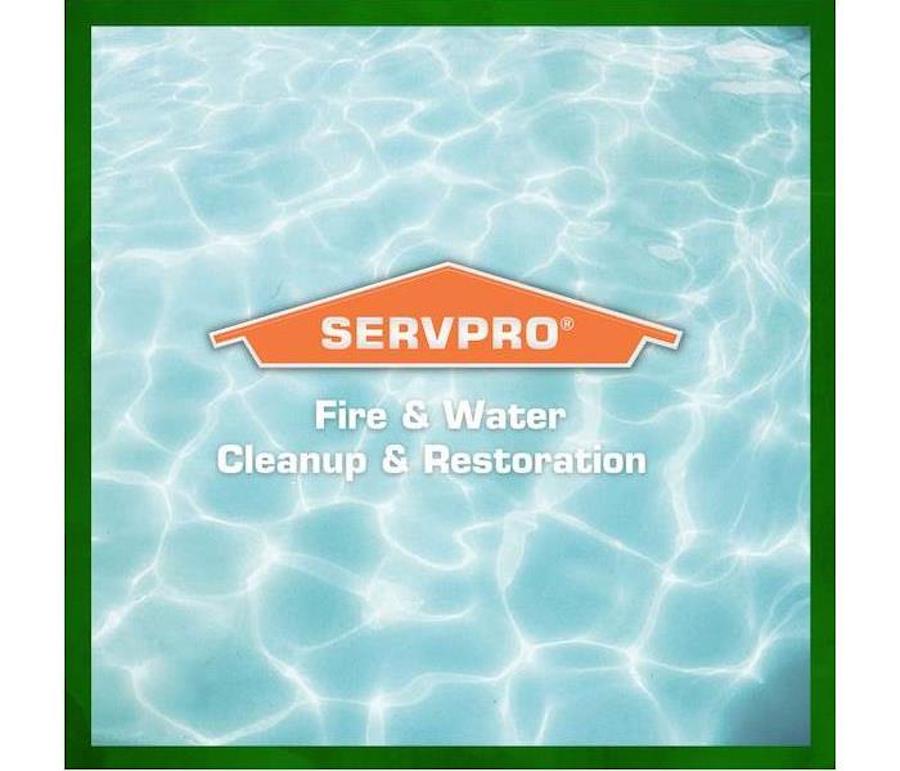 Water damage restoration for your home is no DIY project. SERVPRO techs will be on-site within 4 hours of the initial call.
Water damage restoration for your home is no DIY project. SERVPRO techs will be on-site within 4 hours of the initial call.
SERVPRO Evaluates Property Affected by Water Damage Establishing the Best Restoration Approach
Whenever water inundates your Lynnfield property, you are likely to focus on the extraction and drying of wet areas. However, it would be best if you did not overlook safety since water exposure creates personal, environmental, and biohazards in properties. Professional restoration teams are usually trained to incorporate safety into every restoration.
Performing a safety evaluation should be a priority during water damage restoration in Lynnfield properties since every situation manifests different risks. SERVPRO technicians work with a standard checklist which helps ensure a thorough and faster evaluation of the property.
Among the priority items in the safety checklist are:
- Checking whether ceilings are sagging
- Checking whether light fixtures contain water
- Confirming whether the water involved is clean, gray, or black
The evaluation is only valid if followed by the proper precautions to prevent injury or structural damages during restoration. Organizing the loss site is one of the crucial precautions you need to take since restoration equipment, hoses, cables, and house contents may be strewn all over the place, creating trip hazards. Our SERVPRO technicians create a staging area to store all equipment when not in use and stack contents to make room. We also zip tie cables and hoses to create order.
A sagging ceiling poses a significant risk of collapsing, causing head injuries, and increasing the amount of debris to be removed. Water trapped in lighting fixtures increases the risk of electrical shorts. Safely releasing such trapped water should be a priority. Our SERVPRO technicians punch weep-holes in ceilings allowing the water to drip off. For the water trapped in lighting fixtures, we disassemble such fixtures after confirming that power is turned off.
SERVPRO of Lynn / Lynnfield values safety and thus makes it a priority during water damage restoration exercises. Call us at (781) 593-6663. We're Faster To Any Size Disaster.
How Do Professionals Approach Water Removal from Lynn Hardwood Floors?
9/1/2021 (Permalink)
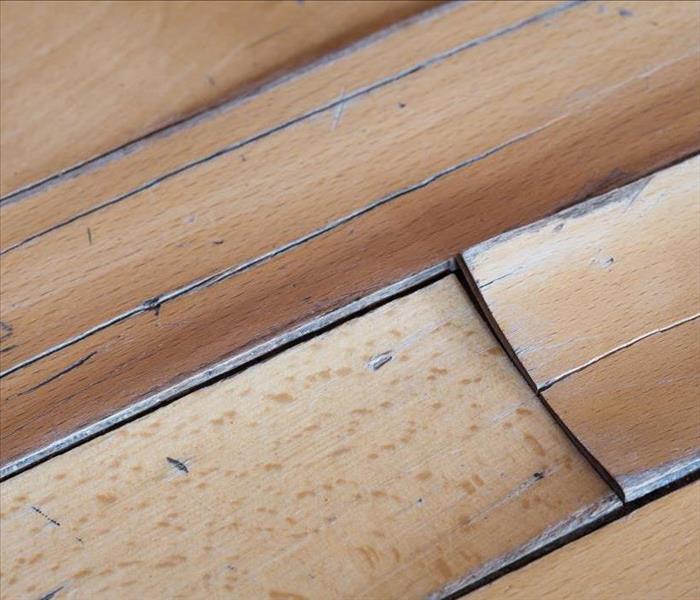 SERVPRO strives to restore water damaged hardwood flooring to the delight of our Lynn customers
SERVPRO strives to restore water damaged hardwood flooring to the delight of our Lynn customers
SERVPRO’s advanced moisture detection and extraction emergency services solve water damaged flooring challenges in Lynn
Water removal after Lynn homes suffer ceiling leaks or burst pipes is rarely straightforward. Homeowners quickly discover that fluids seep into cracks and crevices, disappearing from view while still causing progressive damage to building materials. The trapped water requires extraction and thorough drying to avoid deterioration of load-bearing surfaces and the potential of secondary mold growth and damage.
How Do Wet Subfloors Harm Lynn Hardwood?
Porous materials like plywood subflooring absorb excess water trickling down from the surface. Like a soggy sponge, the unfinished wood in the substrate continuously saturates the visible hardwood layer from the bottom or sides. Appropriate water removal in Lynn and judicious drying prevent the strips or plank hardwood floors from damage such as:
The edges of each piece of hardwood slightly raise or “cup” when the water wicks into the unfinished bottom and sides and the wood swells.
If the top of the hardwood absorbs more water than the sides or bottom, the planks or strips arch up in the middle. Crowning links to overdrying of the bottom of the stips or planks.
Note: Cupping frequently resolves with professional drying. Sanding can restore extreme cases. Crowning is usually permanent. Sections of hardwood might need replacement.
Why Do SERVPRO Technicians Trace Moisture Migration When Repairing Water Damaged Hardwood Floors?
Sensitive moisture detection and metering devices help SERVPRO workers trace the perimeters and severity of water incursions under hardwood floors. After locating pooled water and measuring moisture levels, our crews remove water and dry out damp materials before severe damage using strategies like:
- Negative pressure technology, suctioning trapped water through sealed floor mats attached to extractors via hoses
- Controlled demolition where technicians lift or remove some hardwood strips or planks to permit the direction of warm, dry airflow between the flooring layers
Innovations in trapped water extraction permit SERVPRO of Lynn / Lynnfield to restore the function and appearance of hardwood floors damaged by leaking roofs after storms or pipe ruptures. For the best outcomes, call (781) 242-5430 immediately after noticing the damage for rapid water removal.
Can SERVPRO Offer Water Damage Repairs for Lynn Homes?
8/12/2021 (Permalink)
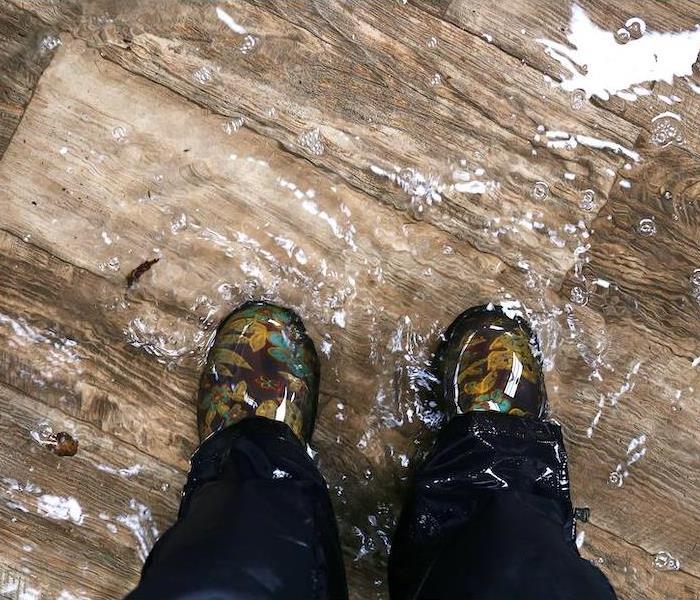 Leaks and burst pipes will cause water damage in your home. SERVPRO techs are trained and ready at a moment's notice.
Leaks and burst pipes will cause water damage in your home. SERVPRO techs are trained and ready at a moment's notice.
With a variety of build-back and repair options, we can help return Lynn homes to preloss conditions.
While not all water damage events require repairs and reconstruction, having the capability to provide these services when necessary saves time and money for customers when choosing SERVPRO.
Fixing the Cause of the Water Damage
From burst pipes to ceiling leaks, water damage repairs for Lynn homes are inevitable. Our SERVPRO professionals work to correct the causes of water damage and the effects of lingering moisture on sensitive building materials. To repair vulnerabilities for the house, we provide:
- Plumbing – Leaks and burst pipes create excessive damage scenarios rapidly on the property. Through controlled demolition to access the breach, we can remove damaged connections or pipes to restore service.
- Roofs – Leaks from the roof can lead to flooding in the attic and the living space beneath it.
- Building Envelope Breaches – From broken windows to missing siding, exterior damage can become interior problems.
Reinstalling Removed Building Materials
Reconstruction and reinstallation are one of the final steps towards making water and flood damages "Like it never even happened." With a general contractor license and experience, we can seamlessly transition between the restoration work and the reconstruction or build-back to follow.
Water can be a destructive force against Lynn homes and businesses, requiring multiple types of water damage repairs. Our SERVPRO of Lynn / Lynnfield team is ready to help however you need at (781) 593-6663.
What Challenges Can Hamper Water Removal From My Lynn Home?
5/19/2021 (Permalink)
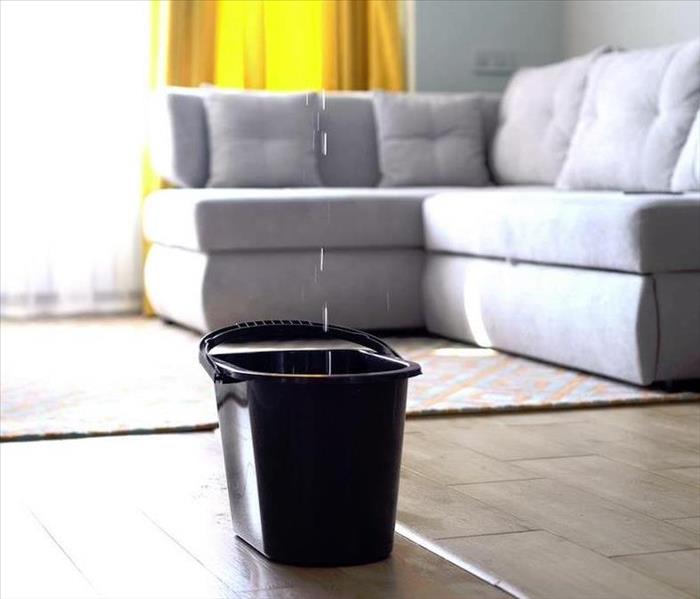 Does the current situation have you under water? Contact SERVPRO for effective water removal and remediation services.
Does the current situation have you under water? Contact SERVPRO for effective water removal and remediation services.
SERVPRO Uses State Of The Art Equipment to Probe and Expedite Water Removal Services in Lynn Properties
Water, whether from burst pipes or ceiling leaks, spreads quickly all over a property. However, removal can take days or even weeks to complete. What is even more consequential is that taking too long to dry the property or leaving traces of moisture creates a separate set of problems such as mold, rotting, and physical changes such as swelling or warping in some materials.
Knowing the challenges that can hamper water removal from Lynn properties can guide the process leading to the desired outcomes. The two common challenges many homeowners encounter are failure to complete water removal in good time and leaving traces of hidden moisture because of lacking the appropriate resources.
When our SERVPRO teams embark on water damage remediation, we prioritize estimation of the amount of water involved to dedicate enough resources, especially in the first 48 hours, since mold can start growing within that period. We consider the total square feet affected by the water. We also use penetrative moisture meters to check the level of wetness in materials. Thermal cameras, on the other hand, help reveal any moisture in hidden places, thus restoring your property to a preloss state after:
- Basement flooding
- Burst pipes
- Ceiling leaks
SERVPRO of Lynn / Lynnfield is well equipped to handle any water removal task. Call us at (781) 593-6663.
What Is Necessary To Address Water Damage in East Lynn Properties?
5/9/2021 (Permalink)
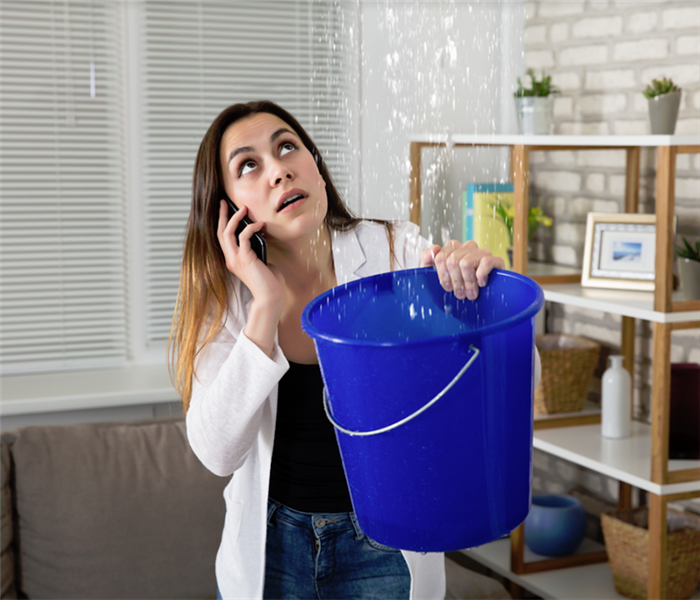 Water leaks can happen when you least expect them. Contact SERVPRO right away after an occurrence. We are standing by to take your call.
Water leaks can happen when you least expect them. Contact SERVPRO right away after an occurrence. We are standing by to take your call.
SERVPRO Sends Fully Equipped Teams to East Lynn Properties to Deliver Water Removal Services
The town that once held the title "City of Sin" was settled in the early 1600s. It is the 5th oldest commonwealth colonial settlement. Lynn was established as an industrial center, but economic development had a negative side effect, with crime and vice taking root in the area earning it the infamous moniker.
Shoemaking was one of the main industries that thrived in the formative years of the city. The first shoemakers set up shop in Lynn in 1635, but it took a while for the industry to thrive. John Adam Dagyr is widely credited with upgrading the quality of footwear made in the city. He settled in the city in 1750 and introduced the ten-footer concept in which a wooded building approximately 10-foot squared was set up and dedicated for shoemaking. The building would hold 5 to 10 artisans and apprentices seating around a table cutting leather, sewing uppers, attaching soles. The ten-footers improved comfort for the artisans since they were heated and also enhanced division of labor, improving the output.
The ten-footers were popular all over New England. However, the quality of shoes made in Lynn was exceptional. President George Washington visited the area in a post-election tour of the young nation and proclaimed Lynn was the "greatest shoe town in the country."
Another pivotal change affecting the footwear industry happened in the late 1800s after Jan E. Matzeliger arrived in 1875. He created and patented a new machine that could make shoes automatically by 1885. Automation helped make shoes readily affordable to average Americans.
A Cosmopolitan City
Over time, the city has developed in other ways. For instance, unlike the days when shoe production was the mainstay, Healthcare and Social Assistance, Retail Trade, and Hotels are the dominant employers.
Lynn is also notable for its large international population, making it a melting pot for different cultures. The downtown cultural district has several distinct properties, including:
- Lynn Arts a gallery run by a community of artists
- Central Square Historic district
- Mary Baker Eddy House
There are also several loft-style apartments within the city.
What Resources Does SERVPRO Use to Fix Water Damage in East Lynn?
Whenever water leaks into your home, it can affect a wide range of materials. Therefore restoration requires several procedures, including water extraction, cleanup, and drying. In extreme cases, you must replace some items and materials damaged beyond repair.
On visiting water damage sites in East Lynn, our SERVPRO technicians prioritize inspection to establish what is affected and create an action plan for the restoration. Depending on the amount of water pooling in the property, we can choose an appropriate extractor, whether it is a portable one, truck-mounted, or submersible.
Porous and semi-porous materials tend to absorb and hold the water. Drying such materials requires the right evaporation rates and proper humidity management. Our SERVPRO technicians use high-speed air movers, industrial dry/wet vacuums, and a variety of dehumidifiers, including LGR and desiccant, making it easy to address:
- Emergency services water damage
- Water damage remediation
- Flood restoration
SERVPRO of Lynn / Lynnfield has resolved numerous water damage situations in homes. Call us at (781) 593-6663 if there is an incident at your property.
East Lynn Residents Can Learn Wilderness First Aid
1/25/2021 (Permalink)
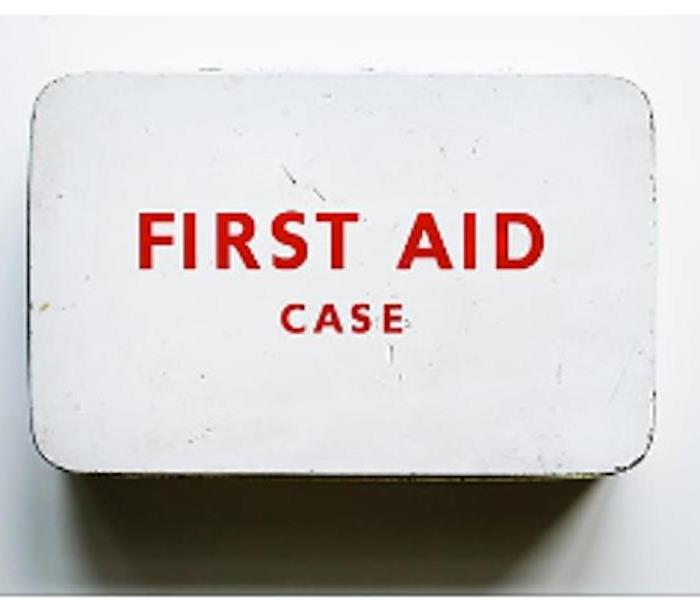 When an emergency occurs at your West Lynn home, call SERVPRO for water extraction and restoration--We give First Aid!
When an emergency occurs at your West Lynn home, call SERVPRO for water extraction and restoration--We give First Aid!
Get The Skills To Help Others In An Emergency At This East Lynn Seminar
East Lynn residents can hone their skills to save a life potentially by having basic first aid knowledge. This Wilderness First Aid workshop runs for two days. It covers many critical necessary actions to take when someone is injured or needs assistance, and there is not fast access to a medical facility. Participants learn how to handle getting caught in the elements, stay warm when the temperature drops, what to do if you get lost or ill, and handle emergencies calmly. Attendees get the first aid training to handle crises when on outings with family, friends, and groups. The training covers how to assess a situation, manage broken bones, necessary survival skills, and safe treatment of soft tissue injuries. At the end of the course, a certificate good for two years will get given to individuals completing the course.
- Date: January 30, 2021
- Time: Saturday, 8:00 AM - 5:00 PM EST
- Price: $195
- Location: Boston Outdoor School, 131 Walnut Street
SERVPRO of Lynn / Lynnfield at (781) 593-6663 brings their certified technicians and professional equipment to handle water mitigation for East Lynn property owners.
Lynn Residents Rely On SERVPRO For Fast Water Removal
1/4/2021 (Permalink)
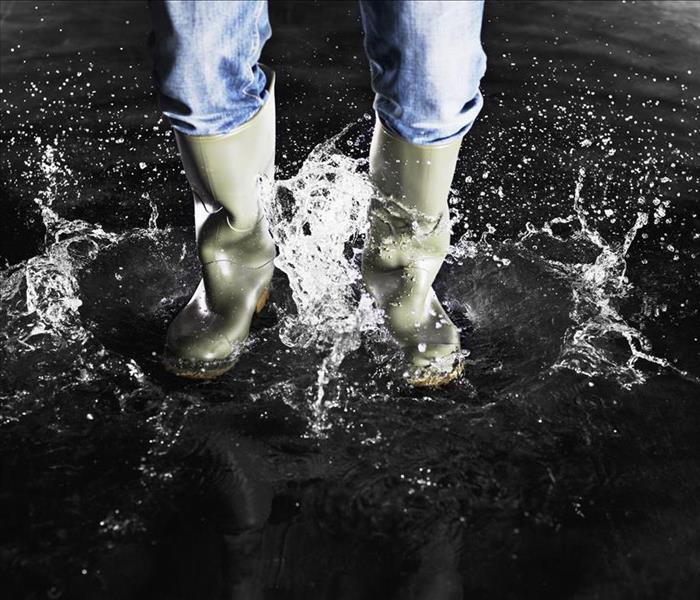 You can take off your boots when SERVPRO arrives for water removal and cleanup in your Lynn area home
You can take off your boots when SERVPRO arrives for water removal and cleanup in your Lynn area home
SERVPRO Arrives Quickly To Lynn Properties For Water Removal and Restoration
Like most of the land in the area, early settlers in the area that would become Lynn bought the land from the indigenous people, the Naumkeag. The tribe maintained their independence, although they initially were members of the Massachusett Confederacy of tribes. There is no evidence this particular tribe was anything but peaceful with their surrounding neighbors, both Native and the settlers. As more European settlers came into the area, the Native American population dwindled due to illness. When a plague swept through the site in the early 1600s, the Naumkeag people got hit hard and lost large numbers. The population did not recover and by 1633 were all but gone.
Lynn as a city would have never come into existence 350 years ago without a group of settlers from Salem who tired of the fast pace, crowded conditions, and wanted more farmland to raise crops and livestock. All of those needs got met in the not-yet-named Lynn, then called Saugus in 1630. The first official minister for the town was Samuel Whiting, who hailed from King's Lynn in England. The local townsfolk changed the name of the city to Lynn in 1637 in honor of Whiting.
Lynn grew primarily as an agricultural hub, but also due to the making of leather shoes. In fact, the soldiers’ boots for the Continental Army during the Revolutionary War had their creation in the city.
In the present, the city's seal has a colonial boot on it. A Quaker gentleman named Ebenezer Breed saw potential in the town and persuaded other shoemakers and Europeans to settle in the area. By the time Lynn became an official city in 1850, it was already hailed as the Ladies Shoe Capital of the World. At the start of the 1900s, the town was the world leader in shoe production. Over 200 factories put out over one million pairs of shoes daily. This was in part due to the automation developed by an African-American immigrant named Jan Matzeliger. The city saw production begin to decline post-WWII and the last show factory finally closed its doors in 1981.
Jan Ernst Matzeliger was an immigrant from Suriname, then called Dutch Guiana, born to a plantation owner father and a mother who was still an indentured servant. He traveled to Lynn as he was a skilled shoemaker. To make shoes that fit, molds of the buyer’s feet called “lasts” got made and the shoes made around that mold. It was a tedious process that required dexterity and skilled hands. Also, the last-makers would sometimes hold back on delivery of the needed molds asking for more money for the job. Matzeliger set about to automate the shoe laster.
He spent five years developing his invention and finally in 1883, he received the patent for an automated shoe laster. This was the beginning of mass production of shoes, where a skilled shoemaker could produce up to 50 pairs of shoes a day; Matzeliger’s process could produce anywhere from 150 to 700 pairs of shoes in a single day. This lead to the price of most types of shoes getting cut in half and becoming more affordable. The downside of his dedication to developing this technology took a toll on his health. He did not eat and caught a severe cold which led to the discovery he also had tuberculosis. He died in August 1889 just three weeks shy of his 37th birthday.
Another important nickname is "The City of Firsts." Some critical "firsts'' for this town are:
- Established the first leather tannery in 1629
- First fire engine in 1654
- Lydia Pinkham is the first woman to use her image to sell a product in 1875
- Engineers built the first jet airplane engine in Lynn's GE Plant in 1942
Best Places to Check Out in Lynn
Lynn has the benefit of beautiful, natural scenery while still being able to see the city. Lynn Woods is one of the most popular venues for nature lovers. The trails are some of the best hiking in the area. Other popular places to visit in the city are:
- Lynn Shore situated on the beach by Nahant Bay
- High Rock Park has excellent views of Boston
- Lynn Museum and Historical Society highlight the contributions the immigrant population made, plus Lynn's influence on the area’s growth through its hold on the ice and shoe industry.
When it comes to dining, the winner of the Traveler's Choice for restaurants was the Antique Table Restaurant. This eatery is popular because of its Italian menu, excellent food, and gluten-free options. The city has a considerable number of food options with something for everyone's taste.
When a water damage event occurs in a Lynn property, the items that have the best potential for reuse after water removal are nonporous articles. Anything that absorbed the water has the potential for damage. Wood furniture can get restored if absorbing the water has not swelled or cracked crucial joints. SERVPRO technicians have extensive training to visually inspect items and determine if they have the potential for reuse through the various restoration techniques utilized by the techs.
Other top-level concerns about whether an item can get reused depend on many factors:
- How quickly the cleanup started
- If the water caused damage to the item
- Whether the water contains contaminants
If the water caused staining or discoloration to an item or surface, the techs have an array of cleaning agents, and some can lift away water spots. The technicians always test the surface to ensure the method chosen does not mar the exterior the techs are cleaning
Odor control can be another concern, mainly if the water waited a length of time for removal. Pungent, musty odors can set up quickly in a home, and after extraction and drying, the techs can perform different types of applications to dispel and get rid of odors.
SERVPRO of Lynn / Lynnfield at (781) 593-6663 serves the local Lynn community for all types of water removal services. The trained technicians bring their professional equipment and experience to make the damage in the home, "Like it never even happened."
Lynnfield Locals Get Creative with Ceramics
11/20/2020 (Permalink)
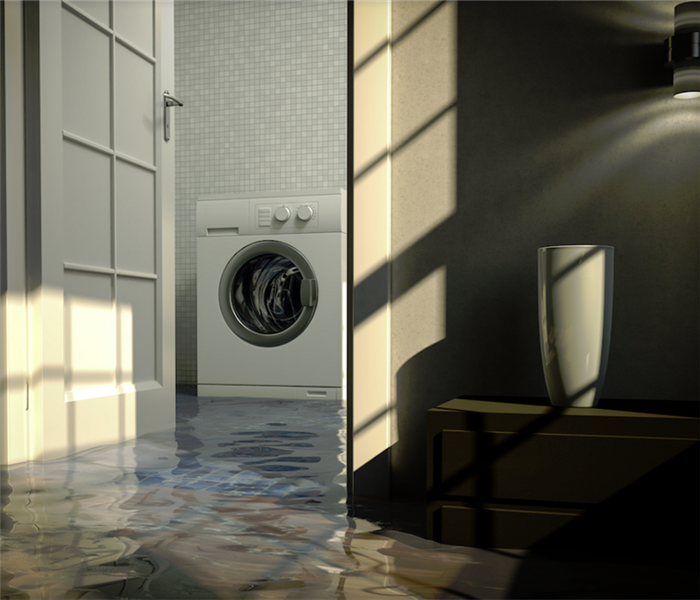 SERVPRO looks forward to the Pottery courses for families in Lynnfield!
SERVPRO looks forward to the Pottery courses for families in Lynnfield!
Two-Session Pottery Courses For Lynnfield Families
The Pottery Mill in nearby Lowell, MA, is proud to present two-visit workshops for interested parties in Lynnfield and elsewhere to unleash their inner artist. An experienced instructor guides small groups through a relaxing Saturday evening of throwing functional pieces on a pottery wheel. November and December course dates are available for groups of up to six people at a time.
- Classes are split into a duo of two-hour courses designed to help you create up to four pieces of pottery on a pottery wheel. Participants must be at least nine years of age.
- Attendees are allowed to bring snacks and refreshments.
- Course costs cover guided instruction, pottery materials, and kiln firing for both classes.
After your pottery is fired, you can come back to glaze it to finish your piece. Pottery is typically completely cured in approximately three weeks. Pickup takes place on Tuesday and Thursday evenings from 6:30 to 9:30.
SERVPRO of Lynn / Lynnfield is a phone call away from providing water restoration for your Lynnfield home at (781) 593-6663.
Local Festivals Invite Lynn Residents to Usher in Autumn
11/13/2020 (Permalink)
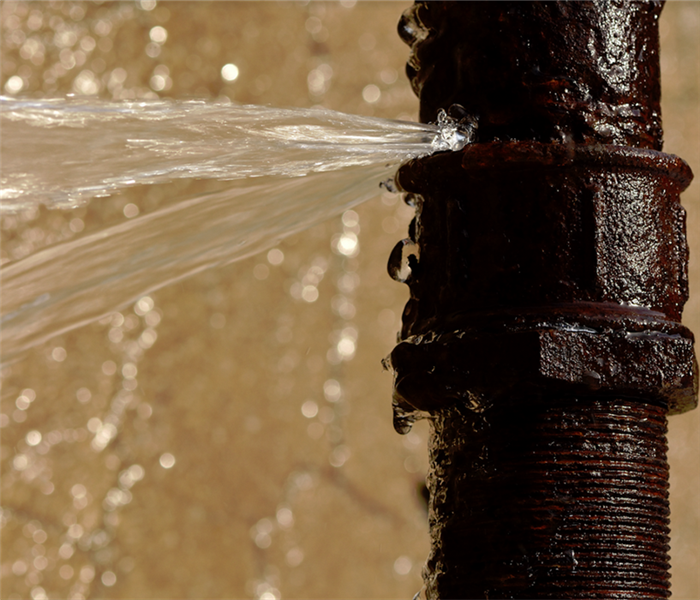 It will be exciting to see the community sampling delicious wines and seltzers this November!
It will be exciting to see the community sampling delicious wines and seltzers this November!
Lynn Locals Sample Delicious Wines and Seltzers This November
Whether you live in Lynn or Cambridge, locals in the Boston area are welcome to join in the fun of the Boston Fall Seltzer & Wine Fest. All guests are submitted as entrants to win a multitude of door prizes and giveaway goodies. Prizes are valued at over $1,000. This fun and vibrant event kicks off on November 14, 2020, from noon to 10 p.m. at the Revere Hotel in Boston Common.
Other features at this exciting festival include:
- Photo stations and photobooths
- Music curated by live DJs
- Games and contests
- A silent auction, the proceeds of which benefit Project Smile
Project Smile is a New England charity that donates items meant to comfort children who have experienced trauma. Toys, books, crayons, stuffed animals, and more are donated to local fire and police departments to give to children in need.
SERVPRO of Lynn / Lynnfield is prepared to support Lynn residents requiring water extraction. Call (781) 593-6663 for 24/7 rapid-response service.
How Long Before Standing Water Becomes an Emergency?
9/22/2020 (Permalink)
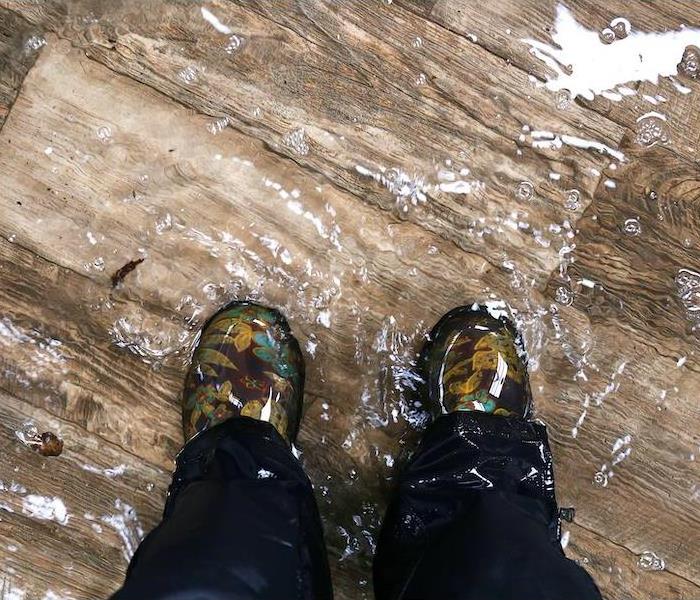 Let SERVPRO help you with water removal in your home.
Let SERVPRO help you with water removal in your home.
Water Incidents in Your Lynnfield Home Call for Prompt Water Removal – SERVPRO is Available 24/7!
A water emergency is generally an unpredictable event that happens when you least expect it. Whether you had a washing machine malfunction or a pipe burst, you need to do whatever is possible to clean up any standing water. Time is of the essence, so waiting too long to have all water removed and your interior dried can lead to secondary damage within your Lynnfield home. Regardless of the water's origin, any unexpected flooding can put your flooring, upholstery, carpeting, and other areas of your property at risk. We are Faster to Any Size Disaster at SERVPRO, and we have crews ready to go 24 hours a day, seven days a week.
What Can I Expect When Calling in Skilled Restoration Technicians?
When you call SERVPRO to assist with your water removal in Lynnwood, you can count on our crew to handle everything from start to finish. Our flood and water extraction experts will:
- Offer helpful advice on minimizing damage to your interior and belongings until our Green Fleet arrives.
- Get started on a quick assessment to formulate a plan for cleanup, drying, and sanitization.
- Begin removing any standing water as soon as possible.
- Carefully extract water from your carpets and carpet padding below, as needed.
- Locate any areas where water may have migrated so that moisture is not left to fester.
- Treat any affected areas with EPA-registered cleaning and antimicrobial agents.
- Coordinate industrial air moving equipment and dehumidifiers to speed the drying process.
All of our water restoration technicians (WRT) are ready to adapt and work efficiently to meet our drying goals. When all gets wrapped up, your interior will be back to preloss condition, "Like it never even happened."
Call SERVPRO of Lynn / Lynnfield when you need us for water removal services at (781) 593-6663. We will deploy a crew to get to work within a few hours.
What Role Do Dehumidifiers Play in Lynn Water Restoration?
9/17/2020 (Permalink)
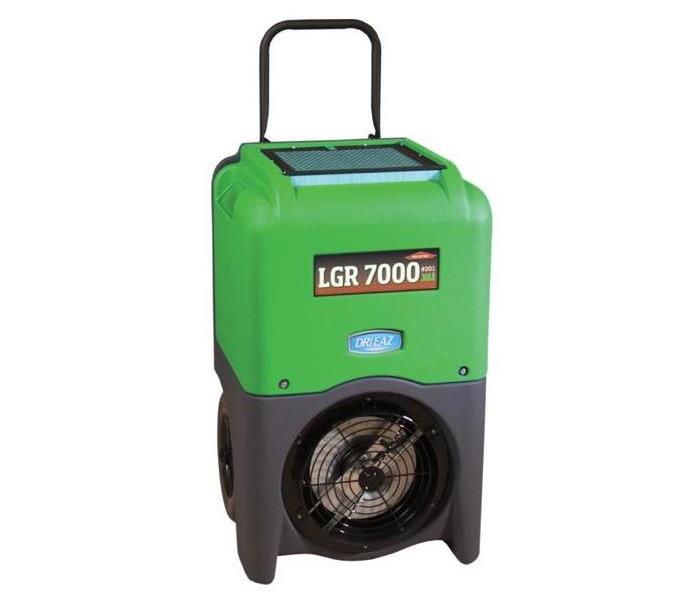 SERVPRO has the equipment for water restoration in your home.
SERVPRO has the equipment for water restoration in your home.
When drying a structure, air movers and dehumidifiers are vital to promoting evaporation and managing moisture.
When it comes to removing moisture and promoting a healthy drying environment for Lynn homes after a water disaster, many tools and devices are necessary. Dehumidification is vital to the process because it removes water vapor from the air, lowering the humidity ratio. The lower this ratio, the more effective evaporation strategies become.
Because of how involved water restoration in Lynn homes often becomes, the right balance of these dehumidification devices is critical to reducing recovery time. The objective of the placement and running of moisture and water vapor removal equipment is to create a balanced drying system where the amount of moisture removed from the environment matches or exceeds what evaporation by our air movers produces.
What Types of Dehumidifiers Exist?
Removing water vapor from the established drying zones in your home often requires different types of dehumidifiers as conditions change throughout the year. Our SERVPRO of Lynn / Lynnfield team uses three main types of dehumidifiers when restoring and drying damaged structures. These include:
- Refrigerant – These are the most common dehumidifiers in restoration, and work much as air conditioners do. Water pulled into the system condenses on cooling coils, removing the moisture from the environment.
- Low Grain Refrigerant – Between conventional and LGR units, the primary difference is how LGR dehumidifiers can produce a lower humidity ratio. Beyond pre-cooling before reaching evaporator coils, the system works the same as conventional options.
- Desiccant – These options are ideal for lower temperatures and have the advantage of exhausting dry, warm air back into the drying zone after moisture removal.
Moisture removal from drying areas in the house requires a few dehumidifier types that our SERVPRO of Lynn / Lynnfield team uses. For efficient drying after a loss, give us a call at (781) 593-6663.
How to Handle a Basement Flood
7/10/2020 (Permalink)
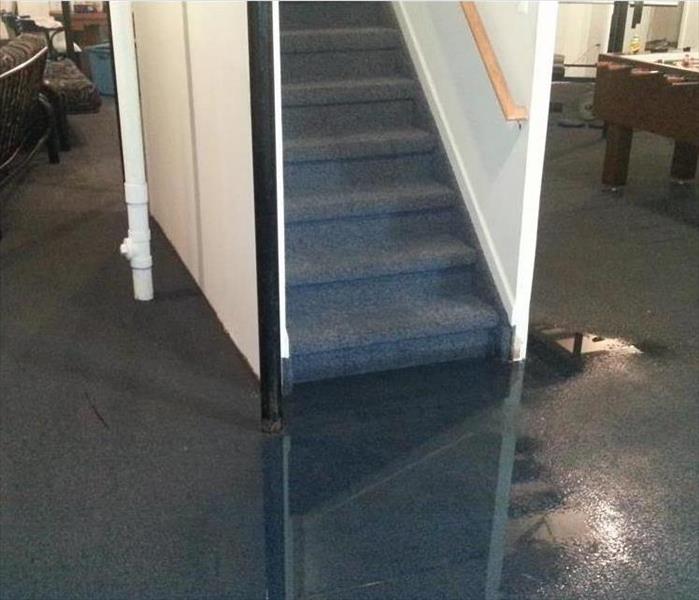 Basement flooding is common in Massachusetts, especially in the summer months
Basement flooding is common in Massachusetts, especially in the summer months
Things to do immediately after a basement flood
- First, make sure that it’s safe to enter your home. Check for structural damage, such as cracks, holes or warping.
- Immediately shut off the electrical supply to your home at the main circuit breaker. Be aware of electrical wires that are under the water level.
- If the flooding is due to a burst water pipe in your home, shut off the main water supply.
- Avoid direct contact with floodwater, which may contain dangerous contaminants. If you must walk through floodwater, wear protective clothing, such as disposable overalls, eyewear, gloves, and a face mask.
- Call your insurance company, take photos, and document all damaged items. Make a list of the belongings to restore and to discard. This will help you with your insurance claim.
- If you have a sump pump installed, wait for it to drain the floodwater. If the pump has a backup battery, it should drain the water even if the power is off.
Basement flood cleanup tips
- Quickly remove affected items from floodwater to avoid mold growth, warping, and rot. Items that suck up a lot of water (like carpet and furniture) can usually be salvaged if they have been in floodwater for less than 24 hours. Otherwise, throw them away.
- Completely dry the basement to avoid further damage and mold growth.
- Suck up the water with a sump pump and a Wet-Dry vacuum.
- Use dehumidifiers and ventilate the basement as much as possible. Use fans and open windows if the weather allows, but not when the outside humidity is high.
- Remove the baseboards (if present) and drill 1-inch holes halfway between the wall studs at the base of the walls. This allows moist air from behind the walls to evaporate.
- Properly drying a flooded basement may take up to two weeks.
- After everything has been dried, clean and disinfect the basement contents and structure (walls, foundation floor, drywall, etc.). You may need to discard the drywall and wood if a lot of mold has developed.
- Don’t use bleach to clean mold because bleach kills live mold but not mold spores. Household detergent is preferable.
- Regardless of the size of the mold-affected area, strongly consider contacting a mold remediation company. They can identify the moisture source and restore the moldy surfaces efficiently and without risk of mold recurrence.
- Make any necessary repairs, such as filling foundation cracks, replacing damaged drywall with a mold-resistant type, and sealing windows and vents.
- If your basement has been flooded with sewage, check out our tips to handle sewage backup in a basement.
How to prevent basement flooding
- Clean your gutters and downspouts and divert rainwater six feet away from the house. Also, make sure the ground is slightly sloping away from your home.
- Install an emergency generator to provide your house with electricity during blackouts.
- Install a sump pump that automatically drains water from your basement and prevents water from rising. Choose one with a backup battery.
- Seal openings or cracks in the walls, floors, foundations, and windows of your house.
- Install porous pavement around your home to help absorb rainwater and thawed snow.
- Ensure that your drainage systems and plumbing are working properly. Have them checked periodically by a professional.
SERVPRO of Lynn/Lynnfield has been helping customers with water damage for more than 20 years. Call us today ay 781.593.6663
Prevent Water In Your Attic This Summer
6/19/2020 (Permalink)
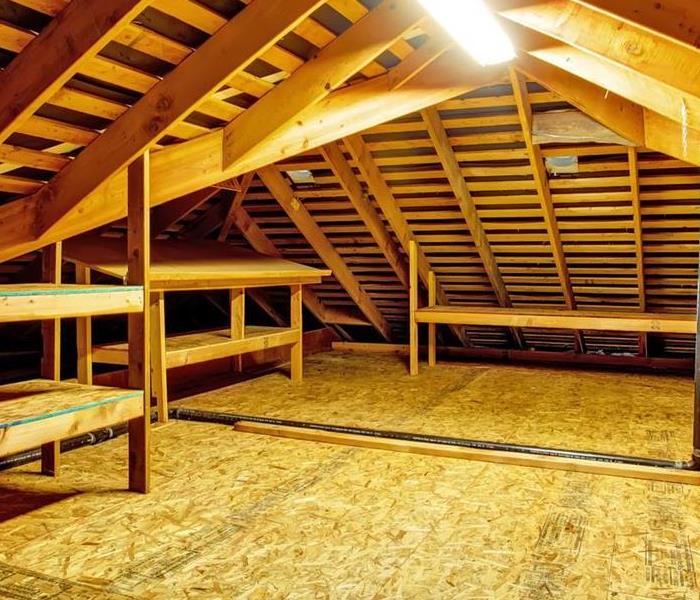 Warm summer weather can lead to unwanted moisture in your attic
Warm summer weather can lead to unwanted moisture in your attic
Water and moisture in your attic can cause you headaches and costly repairs. Mold can grow and compromise your health, and water can weaken the structural integrity of your home. Most of the time, attic water damage is caused by a roof leakage. Other times, it may be improper attic ventilation and insulation or appliance failures. Here’s how to prevent roof leakage and water damage from ventilation, insulation, or appliances in your attic.
How to Prevent Roof Leakage
The best tip on how to prevent roof leakage is to maintain it regularly:
- Trim your trees to prevent dead limbs falling on your roof
- Clear the roof of any twigs, leaves, and other debris
- Check and clean the gutters and downspouts to ensure they are draining properly
- Have a roofing contractor inspect your roof regularly
A professional roofing contractor can check the roof’s integrity and spot and fix missing shingles, warping, corrosion, or any other issue, in time to prevent roof leakage.
Tips to Find and Repair a Roof Leakage
First, check the insulation and wood for signs of water damage, such as discoloration and mold growth. The area where the two roofs join at an angle is prone to cracks and roof leaks, so make sure to inspect it as well.
Leaks are also common in the area around attic plumbing stacks. Another way to detect water leaks in the attic is to inspect the recessed lighting canisters. Rust, corrosion, and stains around them indicate moisture coming from the attic and possible electrical dangers.
If you see these signs, check and fix these issues: worn moisture barriers, deteriorated shingles or pipe flashing, missing flashing, caps or shingles, or clogged gutters and downspouts. Check out more tips to repair a roof leak.
Ventilate Your Attic
Besides learning how to prevent roof leakage, ensure your attic is properly ventilated. Without correct ventilation, the moisture in your attic increases. Having good attic ventilation is especially important in winter. That’s because, in winter, warm air rises to the ceiling, enters the attic, and condenses on the cold surfaces of the attic. Condensation can’t escape unless your attic has adequate ventilation.
Additionally, make sure your attic vents — soffit, ridge, and gable-mounted vents — openings are not blocked by something like insulation. There are many ways to improve attic ventilation, so be sure to consult a specialist.
Insulate Your Attic
Insulation plays an important role in controlling the temperature levels in your attic. In winter, the attic temperature should be five to ten degrees warmer than the outside. Otherwise, ice dams may form on the edges of your roof, potentially causing water damage.
So, make sure your attic floor is properly insulated to help prevent warm air from entering the attic. In addition, ensure the insulation of heating ducts are also in good shape.
To check if your insulation is in good condition, ensure it’s thick, soft, and dry. If it feels moist and looks thin and flat, it will create high moisture conditions. Replace it immediately.
Vent Appliances to the Outside
A common mistake in homes is improper ventilation of appliances. The dryer, kitchen, and bathroom vents should always blow the air to the outside and not in the attic. Your attic ventilation may not otherwise be able to eliminate the accumulated moisture efficiently.
Maintain Attic Appliances
Note that appliances in your attic such as air conditioners, swamp coolers, and HVAC systems may fail and cause water damage. During your attic inspection, check these appliances for wear and tear and loose connections.
Now that you know how to prevent roof leakage and attic water damage, learn how to avoid other types of water damage in your home. As ventilation is important in the entire house, check out more home ventilation tips and how to control the humidity in your home.
For water removal services and mold cleaning services, contact SERVPRO of Lynn/Lynnfield at 781.593.6663.
Sewage Backups
1/20/2020 (Permalink)
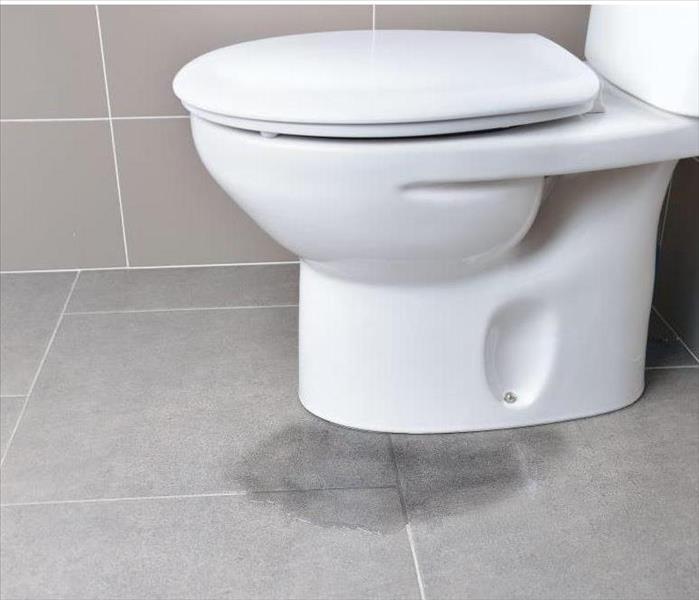 Sewage backups are dangerous and should be handled by a professional
Sewage backups are dangerous and should be handled by a professional
Sewage backup is no easy task to deal with, and it’s more common than you think. A backup occurs when sewer water overflows from the drains in your home, like the sink, toilet, shower, and tub.
When dealing with sewer backup, it’s important to take the necessary steps to handle the mess to ensure that your personal items and space are properly sanitized; failure to do so can lead to greater damage and health hazards in the future.
Below are some commonly asked questions about sewage backup, plus, solutions to ensure your family’s safety.
What Causes Sewer Backup?
Various factors can contribute to sewage backup, but the most common cause is a clog in your sewer line, which typically occurs when solid material builds up over time.
Some common causes of clogs or sewer failure:
- Pouring things like excess fats and oils, coffee grounds, food solids, and large food waste down your kitchen sink
- Flushing excess soap, hair, toilet paper, paper towels, and sanitary napkins down the drain or toilet
- Broken or leaking pipes, poorly designed sewer systems (such as those invaded by tree roots nearby), snow and ice (Massachusetts can experience intense winter weather); or mainline backups caused by vandalism, natural disasters, or infrastructure breakdown
Can My Family Safely Inhabit the House After a Sewer Backup?
It’s definitely not safe for your family to stay inside your Lynn, Lynnfield or Nahant home after a sewer backup. The contaminated water is considered hazardous to your health, as it may contain pathogenic, toxigenic, or other harmful agents.
It’s important to ensure that your home is as sanitary as possible before re-inhabiting it. In many cases, property owners are not equipped to handle effective cleanup and professional mitigation and sanitation may be required.
What Hazards Are Commonly Caused by Sewer Backups?
Sewer backups can lead to hazards other than damage to your home, property, and possessions. If the area affected by the sewer backup goes untreated, it can lead to the spread of disease-causing organisms like bacteria, viruses, and parasites.
It’s important to avoid contact with the sewer water and anything it has been in contact with. The contaminants found in sewer water can cause painful irritations and rashes when they come in contact with the skin.
Ingesting contaminants can lead to nausea, abdominal pain, vomiting, diarrhea, and even hepatitis A. Inhaling airborne microorganisms can cause respiratory infections and allergic reactions as well.
Can I Clean Up The Mess Myself?
Although property owners are responsible for dealing with the aftermath of a sewer backup, you should only clean up the mess yourself if you’re knowledgeable of how to clean and sanitize effectively.
If your Lynn. Lynnfield or Nahant home has only experienced minor damage and you’re able to clean the area on your own, it’s recommended to take precautions by wearing rubber boots, protective gloves, goggles, and a facemask to minimize your contact with contaminants.
If your home has experienced major sewer backup (or if the water has been in contact with any electrical outlets), we recommend consulting an experienced professional before you begin cleaning up the mess—water is highly conductive of electricity.
Can I Use Bleach to Clean it Up?
It’s not a good idea to clean up the mess yourself if you’re not an experienced professional or without at least consulting with a professional first.
Bleach also isn’t a good solution for extensive cleanup because it does a poor job of eliminating the contamination left by standing sewer water. Although bleach is a common household disinfectant, sewer backup is much more harmful than common household messes and should be cleaned up with stronger disinfectants.
How Do I Know If Everything has been Appropriately Sanitized?
After the sewage backup has been cleaned up and you’re able to reenter the property, you can go through your space and assess what still needs to be cleaned (e.g., personal belongings, furniture, and surfaces). Some cleaning can be performed on your own; for everything else, SERVPRO of Lynn/Lynnfield can handle it.
If, for example, you want to appropriately sanitize the surfaces of your home affected by sewage backup, mix one quarter cup of bleach with one gallon of water and use this solution to clean all hard surfaces. Leave it on for at least one minute, and rinse the area with soapy water.
For carpets and fabrics that weren’t damaged or touched by the waste water, you can sanitize them with Lysol or another less abrasive ammonia product, rinse clean with soapy water, and repeat as needed.
Can I Keep Any Household Items After Sewage Backup?
With the exception of hard-surface items that can be properly cleaned and restore, you shouldn’t keep anything that came in contact with the sewer water. These items could have absorbed hazardous waste materials.
Sewer water is highly hazardous, so you wouldn’t want to risk you or your family’s health, no matter how badly you want to keep a personal item.
Is Sewer Backup Covered by Insurance?
In some cases, property owners are responsible for a sewage backup bill. That’s why it’s important to purchase homeowners insurance, and make sure sewer backups are covered in your policy, as it can provide thousands of dollars in coverage.
If you’re renting a home, be sure to discuss any issues with your landlord and/or property manager. Property owners are typically liable for this type of damage, but renter’s insurance may provide additional coverage as well.
Sewer backup can be stressful to deal with on your own, so it’s important to stay informed on all the necessary precautions needed to handle the situation.
For more information please call SERVPRO of Lynn/Lynnfield at 781.593.6663
Drying Equipment
1/14/2020 (Permalink)
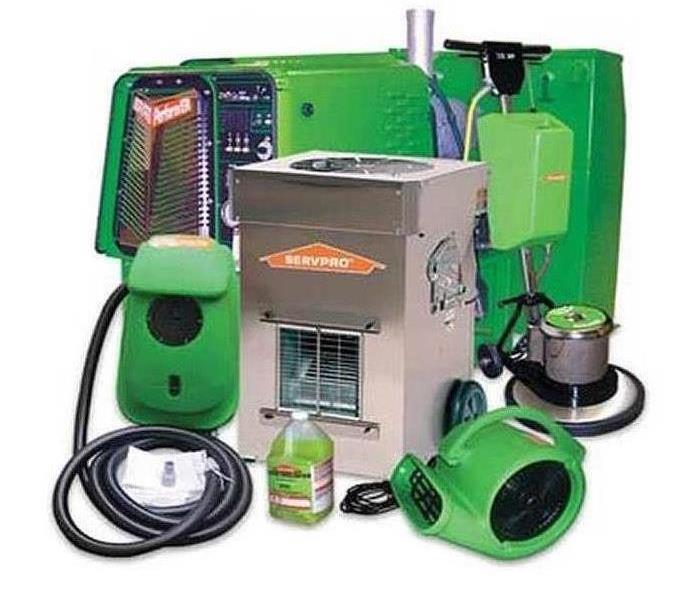 To properly recover from a water damage loss, professional equipment should be used
To properly recover from a water damage loss, professional equipment should be used
Water damage is one of those things that we might all experience, although none of us want to! Because water damage can come from so many different sources, like an overflowing bathtub or a burst pipe, it is a more common occurrence than many people realize. Most people think of fans and wet-vacs as the only tools necessary in many water damage restoration cases, but the reality is that you need professional equipment. Here at SERVPRO of Lynn/Lynnfield we have many tools that we use in a water damage restoration that are far more effective than your average water removal tools.
- Drying fans– Unlike your standard box fan, our drying fans are large, commercial-grade drying fans that can quickly and effectively dry out things like carpet, padding, and other absorbent materials.
- Dehumidifiers– Mold can grow even if there is a lot of moisture in the air and not necessarily on your belongings– that’s why we finish our water damage restoration water removal process not just with fans and water extraction methods, but with dehumidifiers as well to draw the moisture from the air.
- Water extraction– When you need water removed from things like carpeting, you need the right water extraction tools. Our powerful water extractors can suck up far more water than a shop vac or even a wet-vac. The more water you get out with water extraction, the better the rest of the cleanup process can go.
If you suffer a water damage at your Lynn, Lynnfield or Nahant home please give SERVPRO of Lynn/Lynnfield a call at 781.593.6663!
Is That Water Damage Old or New?
10/22/2019 (Permalink)
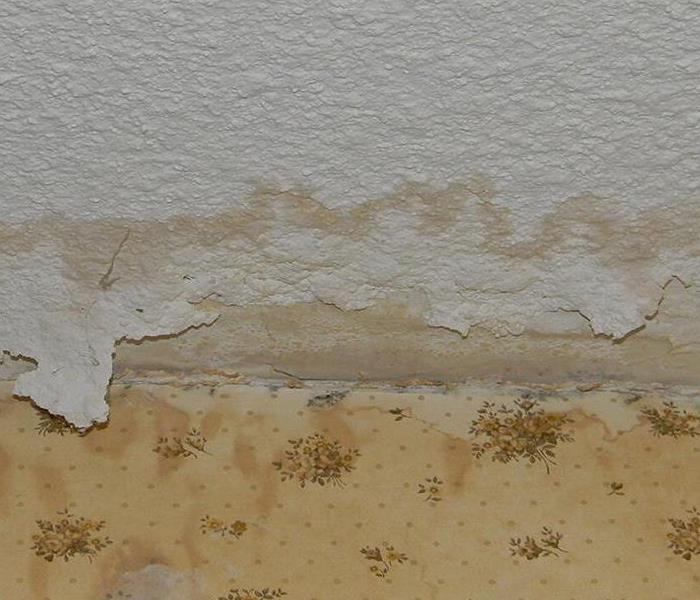 Is that water damage old or new?
Is that water damage old or new?
Has that water damage always been there? Or did it just happen? It’s wise to figure out if water damage is new or old, so that you know how extensive the damage may be, and what you need to do to stop the water intrusion.
Step One: Determine Materials
Water effects different materials in different ways. If tile, brick, or another tough material has been affected by water damage, chances are the damage is old. It takes time to wear on these materials and create leaks. On the other hand, if your damage is in drywall, hardwood flooring or carpet, it could be new or old water damage. Even a bit of water can affect these materials right away.
Step Two: Look for Rings
Drywall, wooden flooring, and other softer materials may develop “rings” if they have suffered water damage over a long period of time. The water soaks in and discolors the material. It dries out but leaves a stain behind. If this happens a few times, the effect is like several rings of water damage, some large and some small. This means the water damage is old.
Additionally, this pattern of water damage means that the water damage is intermittent. It happens frequently, but there are dry spells where the material can dry out. The source of water could be a pipe that only runs sometimes, like the supply pipe to the shower. Or, it could be the result of a roof leak, which only causes water damage when it rains.
Step Three: Touch the Spot
Areas that have new water damage are likely to be wet but not soft. If you touch the water damage and the drywall is soft, the water has had time to soak in and ruin the integrity of the material. This means the water damage is likely to be old. Although, it’s important to note that tough materials like tile may never soften at all.
Step Four: Assess Mold
Mold growth can begin within 24-48 hours of water damage. If you have visible mold on the water damaged area you know it has been soaked for at least 48 hours. More extensive mold growth may indicate the water damage is even over.
Although, the absence of mold doesn’t necessarily mean the damage is new. There could be other environmental factors that explain the lack of mold growth. Maybe it’s too hot or cold for mold to grow. Or, perhaps the excess moisture dries too quickly. If you have a HEPA filter running it my be removing mold spores, limiting their growth on the water damaged area.
Step Five: Ask the Professionals
If you’re wondering how to tell if water damage is new or old, it’s likely because you’re not sure of the cause, or if you can blame the last owner of your home for the trouble. Consulting with the pros at SERVPRO of Lynn/Lynnfield can help. We can assess the age and severity of the damage. We can also help you find the cause and restore the damage.
Call SERVPRO of Lynn/Lynnfield today at 781.593.6663
How to Spot Water Damage
8/4/2019 (Permalink)
In general, a house is one of the biggest investments you will make in your lifetime. In order to protect that investment, you should vigilantly look out for household problems and address them before they worsen.
One such dreaded homeowner issue is water damage. If left unattended, residential water damage can detrimentally impact the structure or spawn other complications, including mold that poses a health risk to inhabitants. Here are several methods for detecting water damage within your house.
1. Check the Floors
No matter what kind of flooring you have, it will manifest signs of water damage. For tile and wood, look for cracked, buckling or warped flooring. When it comes to carpet, be wary of damp spots, gradual rises, soft spots or the smell of mold and dampness.
2. Look for Stains
Water stains on the floor around the bathtub, toilet or sink, as well as stains on ceilings and walls, are some of the most obvious signs of water damage. Unusual stains could indicate there is a leaky pipe or drain inside the wall. Cracks in the drywall or areas that appear swollen and are soft to touch also may signify trouble. Peeling paint is another sign of loose water within wall spaces. As the drywall gets saturated, paint can lose adhesion.
3. Inspect Outside
Observe the exterior of your house. What you want to look for are pools of standing water that can indicate poor drainage in the yard, gutter spouts that aren’t transporting water far enough from the house or leaky rain gutters. Any of those issues could threaten the foundation of your house. Additionally, common signs of water damage on the roof may include pools of water; cracked, curled or missing shingles; or broken flashing.
4. Watch for Rust and Mold
Inspect your water heater and check for rust on the tank or damp spots on the floor. A rusted tank could indicate a slow leak. Additionally, corrosion around pipe connections could be caused by water seepage. Visual signs of active mold growth mean moisture is contacting microscopic mold spores, often in the nooks and crannies of your home. Finally, don’t rely solely on sight. When water stagnates, mold and bacteria can grow, producing a musty, unpleasant smell.
If you're looking for water damage inspection or repair contact the experts at SERVPRO of Lynn/Lynnfield today for all you property restoration needs. 781-593-6663
What Do I Do After My House Floods?
7/9/2019 (Permalink)
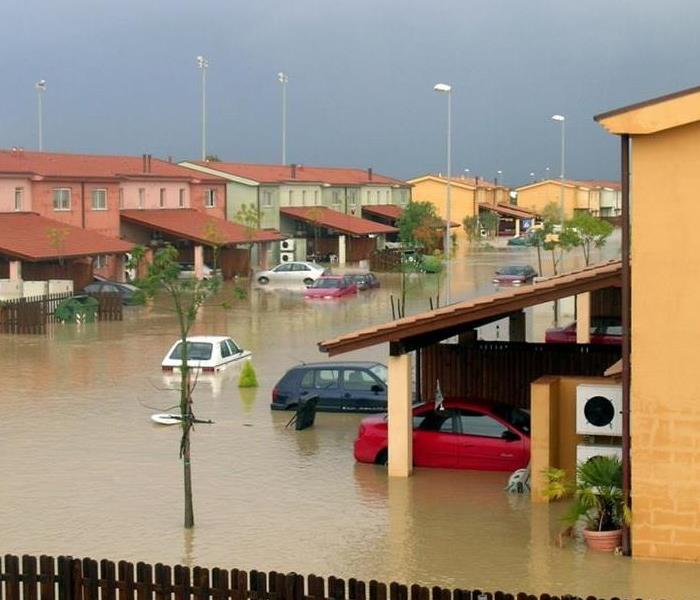 What should you do in the even of a flood at your home?
What should you do in the even of a flood at your home?
If you or someone you know has recently become the victim of a major flood, you know exactly how traumatic it can be. While enduring a flood is traumatic, dealing with the aftermath is just as harrowing. Even minor flooding can inflict severe damage in its wake. It’s important to know what to do after a flood to minimize the damage it can cause.
Safety first
Keep a check on the latest flood updates and don’t return to your house until local officials have declared the region out of danger.
Document the damage
Your immediate concern may be to begin the clean-up work straight away. But before the clean-up effort starts, it’s crucial that you take pictures and note details of the damage to your property – this will help when you’re making claims to your insurance.
Make an insurance claim
Next, report the flood damages to your home insurance company. Based on the evidence, you may be able to get your damaged items replaced or have professional help to clean up.
Clean up
Carpets
Water that seeps into carpeting can quickly form mold and mildew, both of which can be harmful to you and your family and are expensive to remove. Carpets and rugs should be dried as quickly as possible after excess flood water has been removed. Open all windows in the house in order to allow faster drying and to further prevent mold formation.
Flooring
If left untreated, flood damage to floors can eventually cause major structural issues within the foundation of your home. Make sure you remove as much water as possible quickly after flooding has stopped. A sump pump is the best choice to take care of that.
Furniture
Though the majority of flood-damaged furniture is relatively difficult to salvage, certain pieces can be saved with thorough cleaning and care. Leather furniture is most frequently counted as a total loss, but if the damage is minimal, it may be possible to replace certain parts and save the entire piece.
When treating upholstered furniture that has been submerged in flood water for an extended period, consider the fact that cushions and other fillings will most likely need to be replaced. Even if dried completely, this type of stuffing can harbor millions of microscopic mold spores.
Safety with electrical appliances
Electrical appliances that have been submerged, even for a short period, should not be used until they are serviced by a certified electrical repair professional. Make sure they’re unplugged, but do not attempt to dry them yourself.
Safety with gas appliances
Gas appliances that have been damaged by flood water should also be inspected and repaired by a certified professional before they are used. Even if a gas appliance appears to be functioning properly, it is possible that its safety features have been disabled by the presence of standing water, making them extremely dangerous to operate. Gas leaks, also often caused by flood water damage, can cause fires and explosions if exposed to flame.
Future Prevention
If your house has flooded once, it can flood again, so take measures to prevent or mitigate flood damage in the future. Be prepared for the next time by reconstructing your home with flood-proof materials and using techniques that will minimize damage. Have an evacuation plan and look into purchasing flood insurance (if you haven’t already!)
When a flood strikes, the best thing that you can do is to act quickly. The damage caused by a flood can grow exponentially worse if left untreated. Fortunately, following to the above mentioned tips can help you salvage a large portion of your possessions and help to expedite the process of reclaiming your home.
SERVPRO of Lynn/Lynnfield is always ready to help with any water damage to your home or business. Call us at 781.593.6663
The 5 Most Common Sources of Water Damage in your Home
6/18/2019 (Permalink)
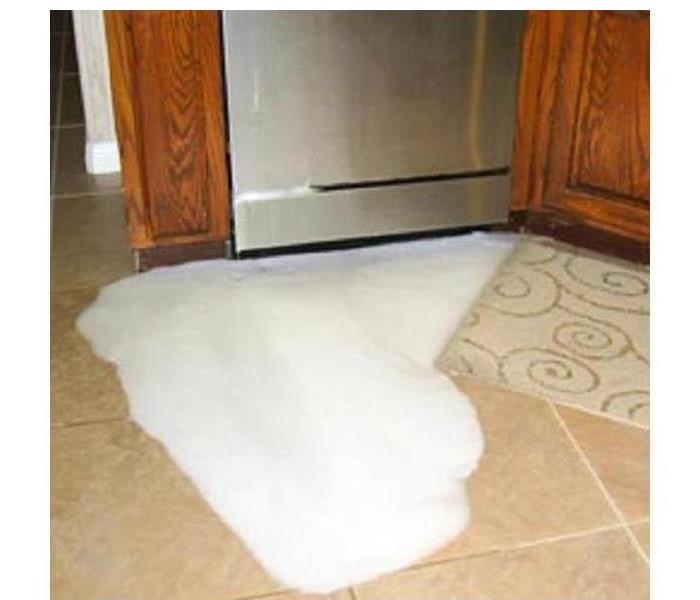 Check these 5 sources to prevent water damage in your home
Check these 5 sources to prevent water damage in your home
As a homeowner, you need to be aware of all the possible things to protect your home against. Storm damage, earthquake damage, wind damage – and, most frequent of all, water damage. We don’t like to think of our homes being ravaged by the elements, but it happens, and when it does, we need to be prepared. Instead of being reactive, we can try taking proactive steps to safeguard our homes and protect our belongings (plus save a bunch on costs). Below, we outline the five most common causes of water damage in your home in the hopes that this information will help you avoid damage to your home.
Your air conditioner might seem to be working just fine, but it’s important to adhere to regular service dates (at least once each year) to ensure nothing is malfunctioning behind the scenes. Your A/C removes moisture from the air, and sometimes that moisture builds up within the A/C itself. If not properly drained, that water could be slowly leaking into your home – potentially ruining the flooring and drywall and, in many cases, introducing mold.
Dishwashers are another possible culprit of water damage in your home. Your dishwasher can cause water damage if not properly sealed, meaning that the latch is broken, or if it was loaded with the wrong soap. Make sure that any leaks are immediately addressed and that your dishwasher is repaired or replaced ASAP, so you can avoid costly water damage repairs to your kitchen.
Perform regular checks on your washing machine, inspecting beneath the unit as well as behind it. Make sure all fittings are securely connected, and that the underbelly of the washing machine isn’t leaking any water beneath the unit. If you have an older washing machine that gives you frequent issues, consider replacing it altogether.
It might seem obvious, but water damage in the home is often caused by leaky pipes. Let’s pretend that you have a loose-fitting pipe under the kitchen sink or in the bathroom, and you’ve just recently noticed water pooling in that area. Don’t wait to call a plumber – a leak in one place in your home could signify leaks in other areas, too. If you notice spikes in your water bill, a leak is likely present and needs to be addressed before additional damage is caused to your landscaping, foundation, flooring, or other areas of the home.
Clogged drains aren’t just annoying, they also cause water damage (and mold growth) if left unchecked. If your toilet is clogged, it means that not only can you not use the toilet, but you will likely also experience water backing up into the shower, sinks, or bathroom floor. Sewer water is extremely dangerous because it contains raw sewage and bacteria, and must be cleaned up by a professional. If your kitchen sink drain is backing up, you can experience sink overflow and subsequent damages to your kitchen flooring and cabinetry. Make sure to seek professional help when experiencing frequent drain clogs so you don’t have to deal with water damage to your home on top of the clog itself.
So there you have it: the top five causes of interior water damage. By knowing the most common causes of home water damage, you’ll be able to take preventative steps to avoid them.
But what if it’s too late for prevention? The team at SERVPRO of Lynn/Lynnfield offers service throughout the North Shore area, so you’ll always be in good hands. Call us today at 781.593.6663
Turn Down the Temp, But Don't Let Your Pipes Freeze!
1/18/2019 (Permalink)
You often hear about how you should turn down the thermostat to save energy, and there are a slew of helpful ideas on the subject. You can turn the thermostat down when you're out, when you're sleeping, and you can save about 1% on your energy bill per degree you turn your thermostat down! This is all very exciting.
But before you go crazy with turning down the thermostat really low, I'd like to point out some things you might want to keep in mind.
Frozen pipes are a big deal. If the water in your pipes starts freezing, you run the risk of that pipe exploding—and goodness knows that's not what most people are hoping to do when they're trying to save energy in the dead of winter. Unfortunately, I can't just say "keep your thermostat over X degrees to avoid pipe freezing." It depends on where you live, where your pipes are, and how well insulated those pipes are.
There are relatively few places in the United States where you'd never have to worry about frozen pipes. According to Weather.com, southern states generally start having issues with frozen pipes when the temperature reaches about 20 degrees Fahrenheit (the distinction is made because houses in the south are less likely to build pipes inside or in the "warm" parts of your home.)
So, unless you live in a place where it never gets below freezing (you lucky souls, you), you'll need to know some things about your house or apartment: Some water pipes will be in the "warm" parts of your house.
This is why you don't want the temperature inside your house to drop too low, because bathroom and kitchen pipes are generally not insulated, and they rely on whatever system you're using to heat the rest of your house to keep warm.
And if you rent, you might want to see if the owners require their tenants to keep their thermostat above a certain level—my apartment requires all tenants to keep their thermostats above 65, for example, and asks us to consider leaving the taps dripping.
But while these are all good reasons to be careful with the temperature you keep your thermostat at, don't forget the rest of your pipes—some of your water pipes may be in "cold" parts of your house, like crawl spaces or attics, where they don't get any of your home's ambient heat and may, in fact, be subjected to air directly from the outside.
What you'll need to do is based on the region you live in, so you may want to look up your state or city's Web site and see if they have recommendations on how to prepare your house for the winter, because you may want to insulate those pipes.
In the end, I suppose it's still a judgment call, but just remember: Your pipes are vulnerable, frozen pipes are a pain, and you should always consider how your house is built before you make any drastic decisions on how to heat your home in the winter.
https://www.energy.gov/energysaver/articles/turn-down-temp-dont-let-your-pipes-freeze
Air Conditioner Maintenance
7/27/2018 (Permalink)
With the past two weeks of high heat and high humidity in the Northeast, air conditioners have been working overtime. Let’s take a look at keeping them in tip top condition!
An air conditioner's filters, coils, and fins require regular maintenance for the unit to function effectively and efficiently throughout its years of service. Neglecting necessary maintenance ensures a steady decline in air conditioning performance while energy use steadily increases.
Air Conditioner Filters
The most important maintenance task that will ensure the efficiency of your air conditioner is to routinely replace or clean its filters. Clogged, dirty filters block normal airflow and reduce a system's efficiency significantly. With normal airflow obstructed, air that bypasses the filter may carry dirt directly into the evaporator coil and impair the coil's heat-absorbing capacity. Replacing a dirty, clogged filter with a clean one can lower your air conditioner's energy consumption by 5% to 15%.
For central air conditioners, filters are generally located somewhere along the return duct's length. Common filter locations are in walls, ceilings, furnaces, or in the air conditioner itself. Room air conditioners have a filter mounted in the grill that faces into the room.
Some types of filters are reusable; others must be replaced. They are available in a variety of types and efficiencies. Clean or replace your air conditioning system's filter or filters every month or two during the cooling season. Filters may need more frequent attention if the air conditioner is in constant use, is subjected to dusty conditions, or you have fur-bearing pets in the house.
Air Conditioner Coils
The air conditioner's evaporator coil and condenser coil collect dirt over their months and years of service. A clean filter prevents the evaporator coil from soiling quickly. In time, however, the evaporator coil will still collect dirt. This dirt reduces airflow and insulates the coil, reducing its ability to absorb heat. To avoid this problem, check your evaporator coil every year and clean it as necessary.
Outdoor condenser coils can also become very dirty if the outdoor environment is dusty or if there is foliage nearby. You can easily see the condenser coil and notice if dirt is collecting on its fins.
You should minimize dirt and debris near the condenser unit. Your dryer vents, falling leaves, and lawn mower are all potential sources of dirt and debris. Cleaning the area around the coil, removing any debris, and trimming foliage back at least 2 feet (0.6 meters) allow for adequate airflow around the condenser.
Coil Fins
The aluminum fins on evaporator and condenser coils are easily bent and can block airflow through the coil. Air conditioning wholesalers sell a tool called a "fin comb" that will comb these fins back into nearly original condition.
Condensate Drains
Occasionally pass a stiff wire through the unit's drain channels. Clogged drain channels prevent a unit from reducing humidity, and the resulting excess moisture may discolor walls or carpet.
Window Seals for Room Air Conditioners
At the start of each cooling season, inspect the seal between the air conditioner and the window frame to ensure it makes contact with the unit's metal case. Moisture can damage this seal, allowing cool air to escape from your house.
Preparing for Winter
In the winter, either cover your room air conditioner or remove and store it. Covering the outdoor unit of a central air conditioner will protect the unit from winter weather and debris.
https://www.energy.gov/energysaver/maintaining-your-air-conditioner
Hardwood Floor Cupping vs. Crowning
6/14/2018 (Permalink)
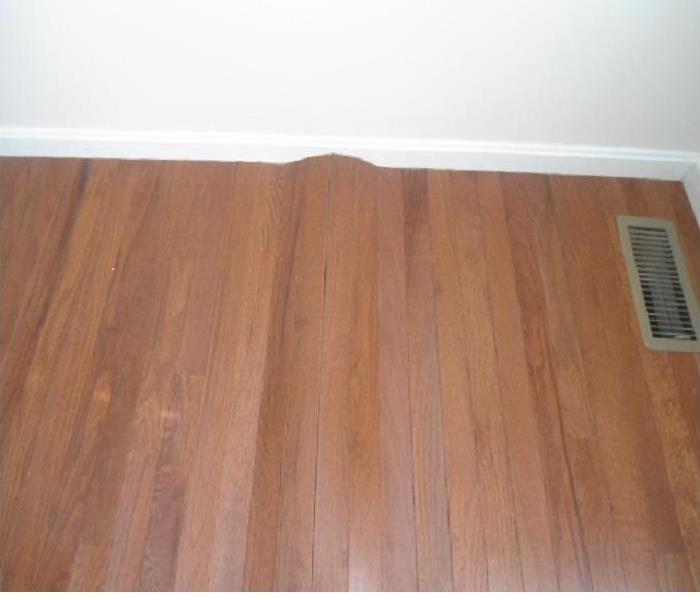 Floor Crowning
Floor Crowning
When moisture hit hardwood flooring wood expands and becomes susceptible to cupping and crowning – two common wood floor problems that, if not addressed properly and at the right time, can require costly sanding and refinishing to fix.
Cupping is a condition where wood board becomes concave – edges high with a center that dips low. As wet hardwood flooring expands, cupping can occur. It is brought on when the bottom of the wood flooring remains wetter than the top surface. When cupping occurs, it’s important not to rush quickly into sanding.
Crowning –the opposite of cupping – occurs when the top edges of the board are sanded off too early and become lower than the rest of the board as it returns to normal moisture levels. Sanding the floor to remove crowning should only begin once drying measures are complete and normal moisture levels have been achieved.
If you have either cupping or crowing floors please give us a call at SERVPRO of Lynn/Lynnfield.
The water damage restoration process begins with a detailed inspection of your property, including a damage assessment. The SERVPRO Franchise Professional is determining the scope of the damage so he or she can develop an appropriate plan of action.
What are those Brown Stains on my Ceiling?
6/14/2018 (Permalink)
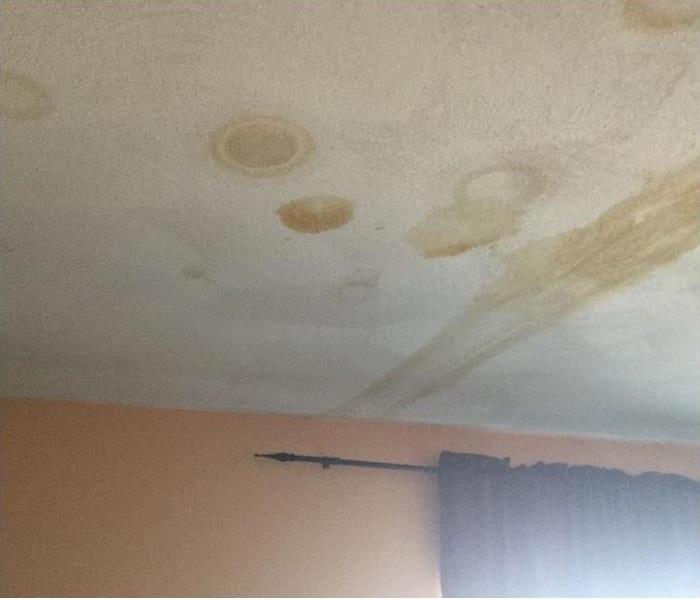 Brown Stains on Ceiling
Brown Stains on Ceiling
Sometimes you'll glance up and notice a truly hideous brownish stain on your ceiling that has appeared seemingly out of nowhere.
A word of caution: If you cover up a water stain without addressing the leak that caused it, you run the risk of additional staining on the ceiling, not to mention more serious structural or electrical damage. That’s why it is so important to find and repair the cause of the water stain as soon as possible, even if it is no longer wet.
Your first priority when dealing with a water stain should be to find the source of the leak that caused it— the roof, the upstairs radiator, and the upstairs bathroom are good places to check.
If you have ceiling staining such at this, please give us a call at SERVPRO of Lynn/Lynnfield for a free inspection at 781-593-6663.
The water damage restoration process begins with a detailed inspection of your property. A SERVPRO Professional will check for the source of water in your home or business and stop it. The water source must be stopped before the drying process can begin. We will determine the scope of the damage and develop an appropriate plan of action.
Water Damage: Why Choose SERVPRO of Lynn/Lynnfield?
6/6/2018 (Permalink)
Water Damage Repair and Restoration
When your Lynnfield home has water damage from flooding or leaks, we have the expertise and equipment to properly restore your property. The water removal and water cleanup process is completed by our highly-trained technicians who will document the drying process. This validates that your property has been dried properly and thoroughly.
Please follow the tips outlined in our Water Damage Tips—Until Help Arrives Guide to protect yourself and your property.
Have Water or Flood Damage?
Call Us Today – (781) 593-6663
Locally Owned Company with National Resources
We live and work in this community too; we might even be neighbors. As a locally owned and operated business, SERVPRO of Lynn / Lynnfield is close by and ready to respond to your flood or water damage emergency. We are proud to be an active member of the Lynnfield community and want to do our part to make our community the best it can be.
Why Choose SERVPRO of Lynn / Lynnfield?
We’re Faster to Any Size Disaster
SERVPRO has over 1,700 U.S. and Canadian Franchise locations, strategically positioned to be faster to any size disaster. If your Lynnfield home or business is affected by water damage, we can provide an immediate emergency response that helps to prevent secondary damage and mold.
Learn More
We’re Highly Trained Water Damage Specialists
As water damage specialists, we have the experience, expertise, and advanced training that enables us to get your property dried quickly and thoroughly. We use scientific drying principles and provide validation and documentation that your property is dry and the job is complete. Learn about our water damage training and certificates.
Learn More
We Use Advanced Drying Equipment and Techniques
Properly restoring your home after a water damage event requires specialized equipment and products. This advanced equipment help us to remove the water, even hidden moisture, quickly and efficiently. We then dry the structure with powerful dehumidifiers. Finally, our technicians will clean the affected area with professional grade cleaning and sanitizing agents for your comfort and safety.
Learn More
Our Water Damage Restoration Process
Every water damage situation is a little different, and requires a unique solution, but the general process stays the same. The steps listed below illustrate our process for the “typical” water damage emergency.
Step 1: Emergency Contact
Step 2: Inspection and Damage Assessment
Step 3: Water Removal/Water Extraction
Step 4: Drying and Dehumidification
Step 5: Cleaning and Repair
Step 6: Restoration
The Water Damage Restoration Process
6/6/2018 (Permalink)
When your home or commercial property has water damage from flooding or leaks, we have the expertise and equipment to properly restore your property. Our experience and scientific approach to water removal and water cleanup enable us to properly dry and restore your property.
Water or Flood Damage?
Call Today – (781) 593-6663
Every water damage event is a little different and requires a unique solution, but the general process stays the same. You can click on any of the steps below to learn more about that process.
The restoration process begins when you call us. Our representative will guide you through the crisis and may ask several questions to help us better understand the equipment and resources.
We determine the scope of your water damage at this stage. We inspect and test to determine the extent of damage and how far the moisture has traveled to ensure proper and complete restoration.
The water removal process begins almost immediately and removes the majority of the water. We use powerful pumps and vacuum units to quickly remove hundreds or thousands of gallons from your property, which helps prevent secondary water damage and mold growth.
We use specialized equipment to remove the remaining water that is harder to access. Our Professionals will use room measurements, temperature, and relative humidity to determine the optimal number of air movers and dehumidifiers needed to dry your home or business.
We clean all of the restorable items and structures damaged by the water. We are adept at cleaning contents using a number of techniques. Our professionals are trained to provide sanitizing treatments and to remove odors and deodorize your property.
Restoration is the process of restoring your home or business to its pre-water damage condition. Restoration may involve minor repairs, such as replacing drywall and installing new carpet, or may entail major repairs, such as the reconstruction of various areas or rooms in a home or business.
Sewage Cleanup and Restoration
6/6/2018 (Permalink)
Water from sewer system backups should be considered very dangerous. The water is grossly unsanitary and may contain bacteria and viruses that could cause serious illness. Special training and equipment is necessary to safely clean this type of contamination.
Sewage Backup or Toilet Overflow? Call Us Today – (781) 593-6663
There are three major types of contaminated water. SERVPRO of Lynn / Lynnfield will inspect that contaminated water to determine the type of water and then plan the appropriate response to safely restore your home or business.
The three types of contaminated water:
Category 1: "Clean Water"
This is water from a clean source, such as a broken clean water supply line or faucet. If left untreated, category 1 water can quickly degrade into category 2 or 3 water depending upon such factors as time, temperature, and contact with contaminants.
- Water from a clean source like a broken water line
- If left untreated, can degrade into category 2 or 3
Category 2: "Gray Water"
This water has a significant level of contamination that could cause discomfort or illness if ingested. Sources for category 2 water may include washing machine overflow; toilet overflow with some urine, but no feces; or dishwasher overflow.
- May contain bacteria and viruses
- Can quickly degrade into category 3 if left untreated
Category 3: "Black Water"
This water is grossly unsanitary and could cause severe illness or death if ingested, and any contact should be avoided. Sources for category 3 water could include flooding from rivers or streams, water from beyond the toilet trap, water from the toilet bowl with feces, or standing water that has begun to support microbial growth.
- May contain untreated sewage, harsh chemicals, and microbes
- Water from flooding rivers or sewer backup
24 Emergency Service
Sewage backup should be considered an emergency and dealt with as quickly as possible. We are the water damage restoration specialists with specific training and expertise to safely restore your home or business.
If you Had a Burst Pipe Would you Know What to do?
1/25/2018 (Permalink)
Well it’s that time of year in New England when temperatures drop into the teens, and as we’ve experienced this past month, into the single digits with the wind chill below zero. Water pipes and cold temperatures are not friends!! A burst pipe can create serious water damage to your home and belongings.
If you had a burst pipe in your home would you know what to do?
Stop the Water Flow
Shut off the main water supply by turning off the main water turnoff. It is best to ensure that everyone in your family knows where the main water turnoff is located and how to turn it off in case of a burst pipe emergency. (Consider a “Water Turn Off” tag like the one pictured above)
Let the pipe drain out the water by turning on all cold faucets. Switch off the water heating system and then turn on all hot faucets to help in draining the water supply system. Also, flush all toilets. All leaks should stop once there is no more water running from the taps.
Find the Break
Locating exactly where the pipe burst is should be done immediately to prevent further damage. Once you've found the burst, you'll know what you have to do next. For instance, if it’s a tiny crack, patching it up may fix the problem for a while. Also, consider which pipe has burst. If the damage is in a main water pipe, it needs to be repaired and dealt with carefully regardless of the cause or size of the break.
If there has been leakage in the house for some time, be careful when entering rooms. Pay attention to the ceilings because if they appear to bulge, it means it is holding loads of water and could cave in any moment. If you've noticed the leak right away, place a bucket underneath to catch the drip.
Call SERVPRO
If there is flooding or water damage in the home call SERPVRO of Lynn/Lynnfield at 781-593-6663.
What Causes Frozen Pipes?
1/16/2017 (Permalink)
What Causes Frozen Pipes?
The water inside pipes can freeze when outdoor temperatures drop below freezing. As freezing water expands, it causes the pressure inside the pipes to increase, possibly leading to bursting pipes.
Preventing Frozen Pipes
- Insulate pipes, especially those close to outside walls, attics or crawl spaces where the chance of freezing is greatest
- Seal air leaks surrounding or near pipes
- Keep garage doors closed if there are water supply lines in the garage
- Disconnect all outdoor hoses and turn off water to exterior faucets and sprinkler systems
- Open kitchen and bathroom cabinet doors to allow warmer air to circulate around the plumbing
- Keep heat at 55 degrees F. or higher even when you are out of town
- During a cold spell turn on both hot and cold faucets near outside walls to allow a small trickle of water to run during the night
- If you need to be away from home, leave the heat on and drain your water system before you go
- Identify the locations of shutoff valves so that you are prepared to stop the flow of water as soon as possible when a pipe bursts
What to Do When Pipes Freeze or Burst
If pipes freeze:
- Open all faucets
- Remove insulation and wrap pipes in rags
- If all else fails, call your plumber
If pipes burst:
- Shut off the water immediately to prevent additional damage
- Take proper precautions to avoid an electrical shock from being in or near standing water
- Take an inventory of any damaged property or possessions
- Contact the professionals at SERVPRO of Lynn/Lynnfield for help at 781-593-6663.
- We’ll make it “Like it never even happened
 Water damage can cause a lot of trouble for you and your family. Contact SERVPRO 24/7 for remediation and mitigation services.
Water damage can cause a lot of trouble for you and your family. Contact SERVPRO 24/7 for remediation and mitigation services.





 24/7 Emergency Service
24/7 Emergency Service































